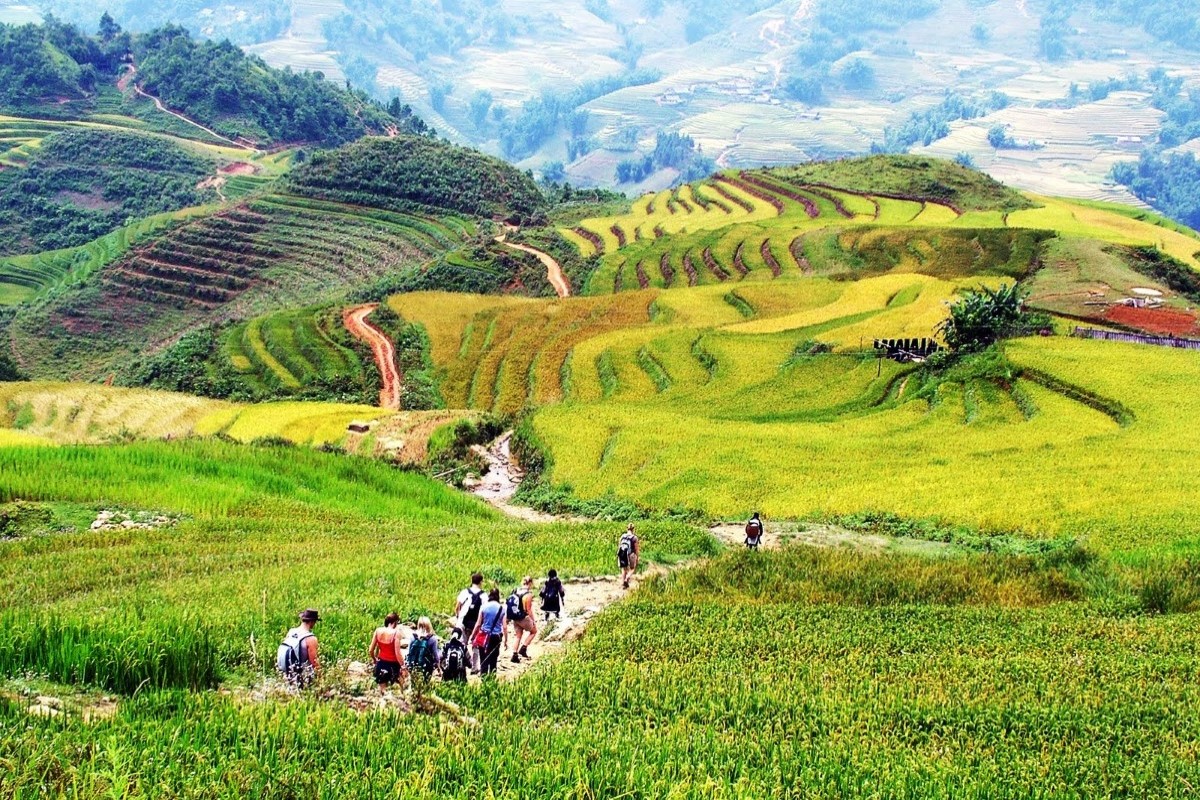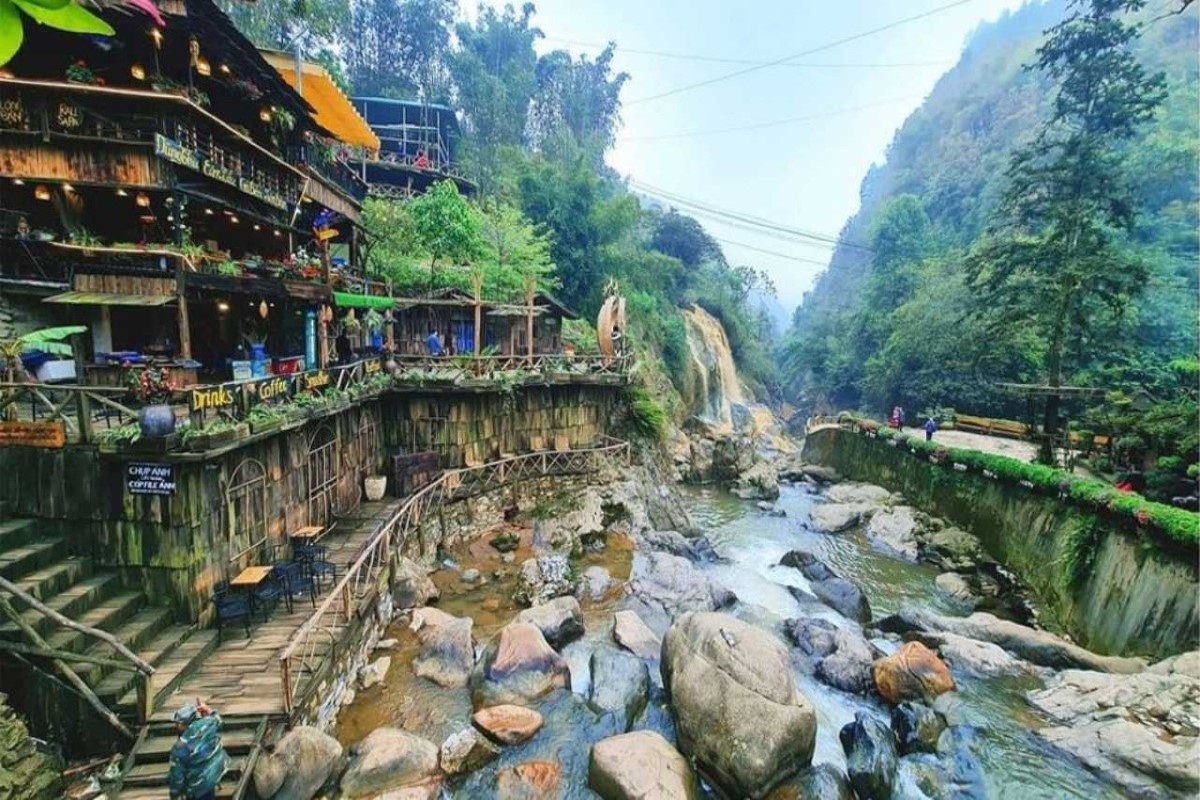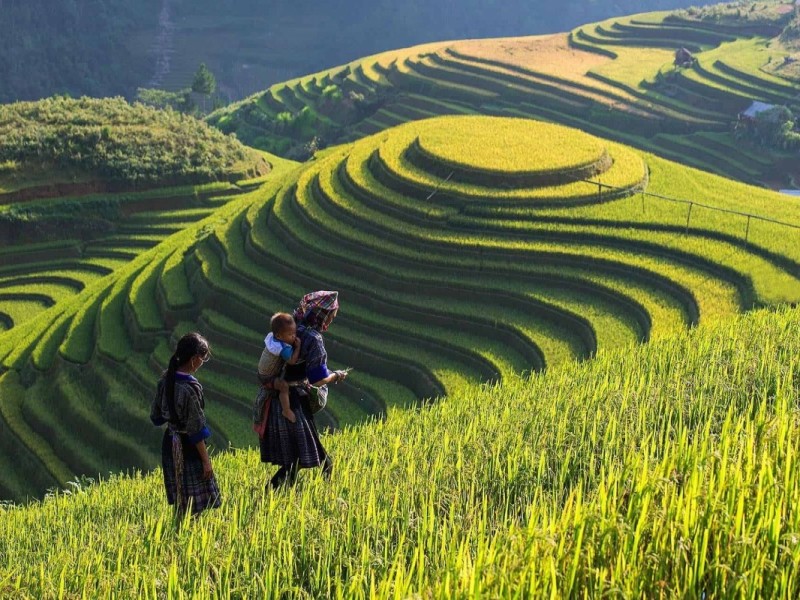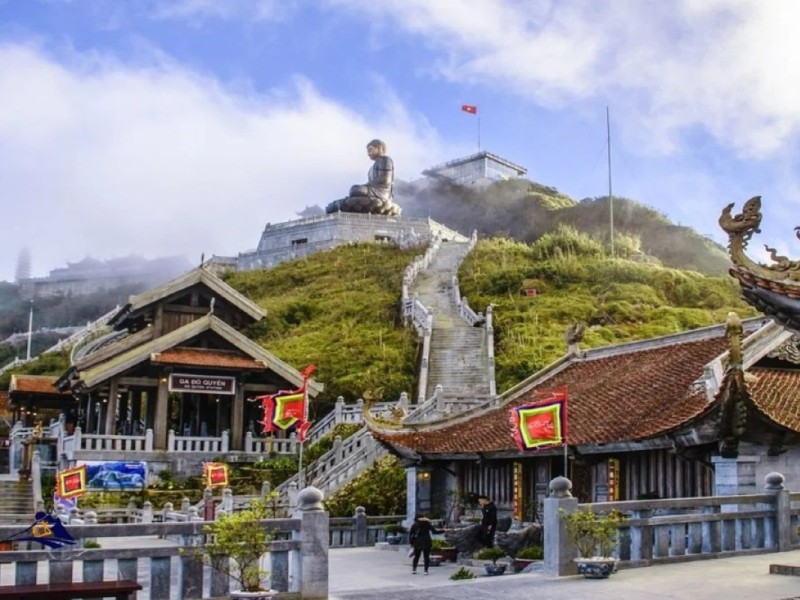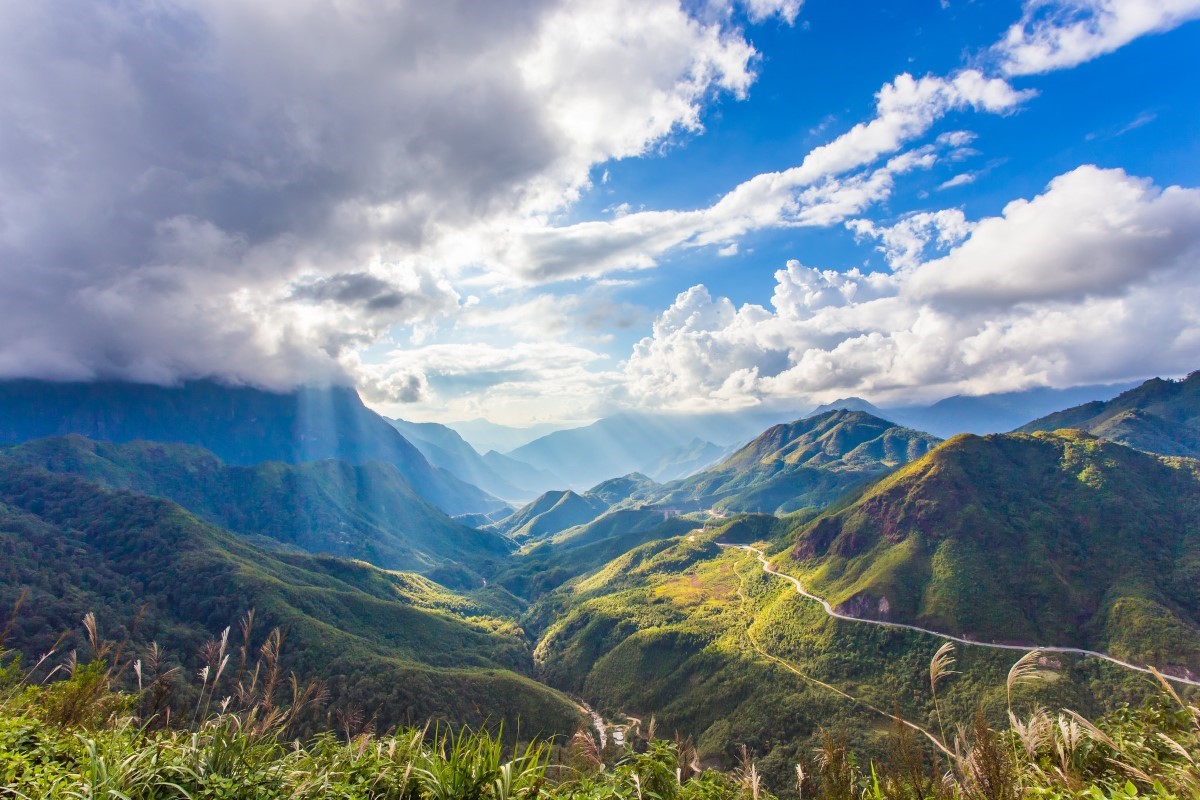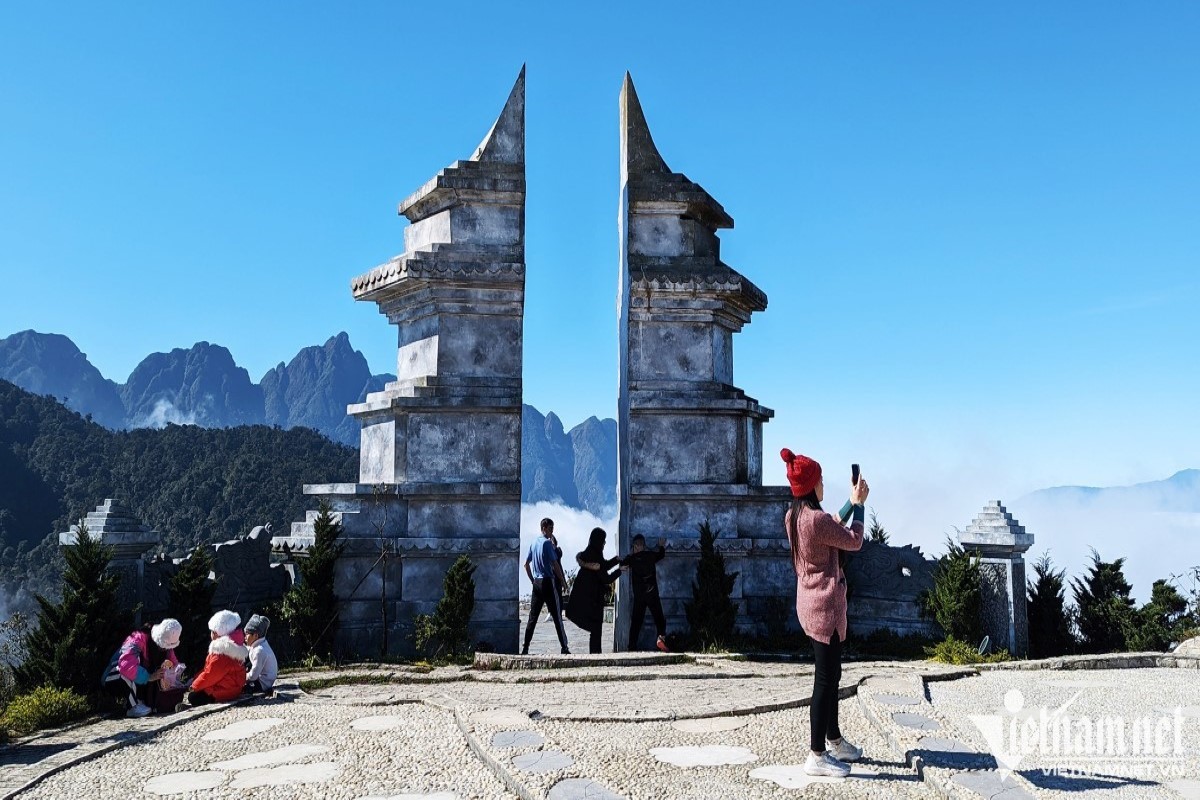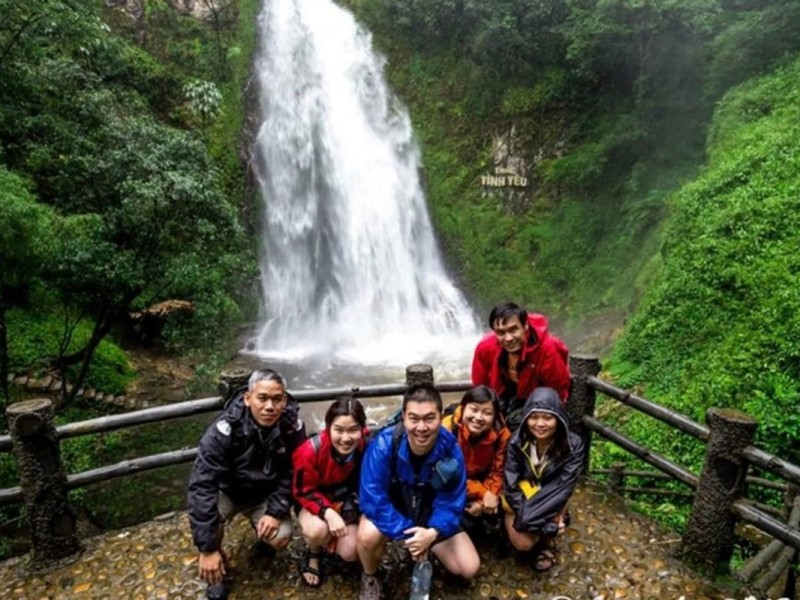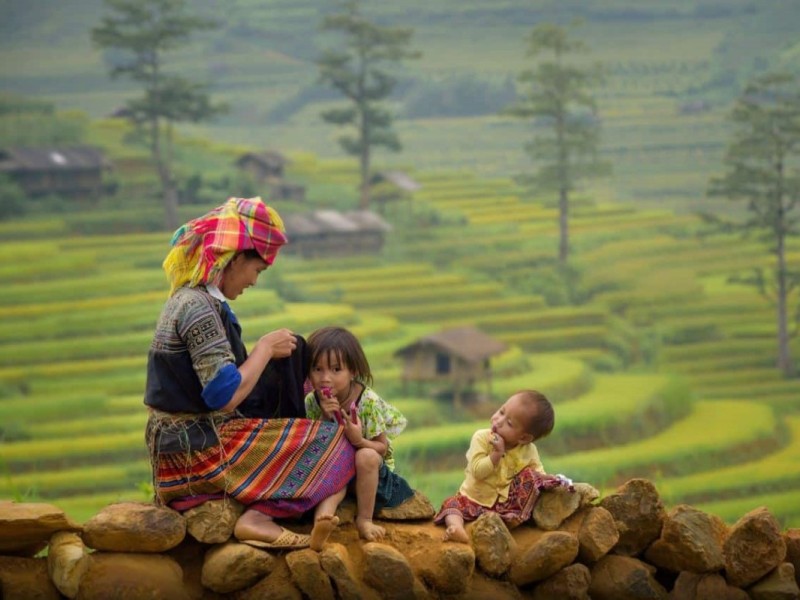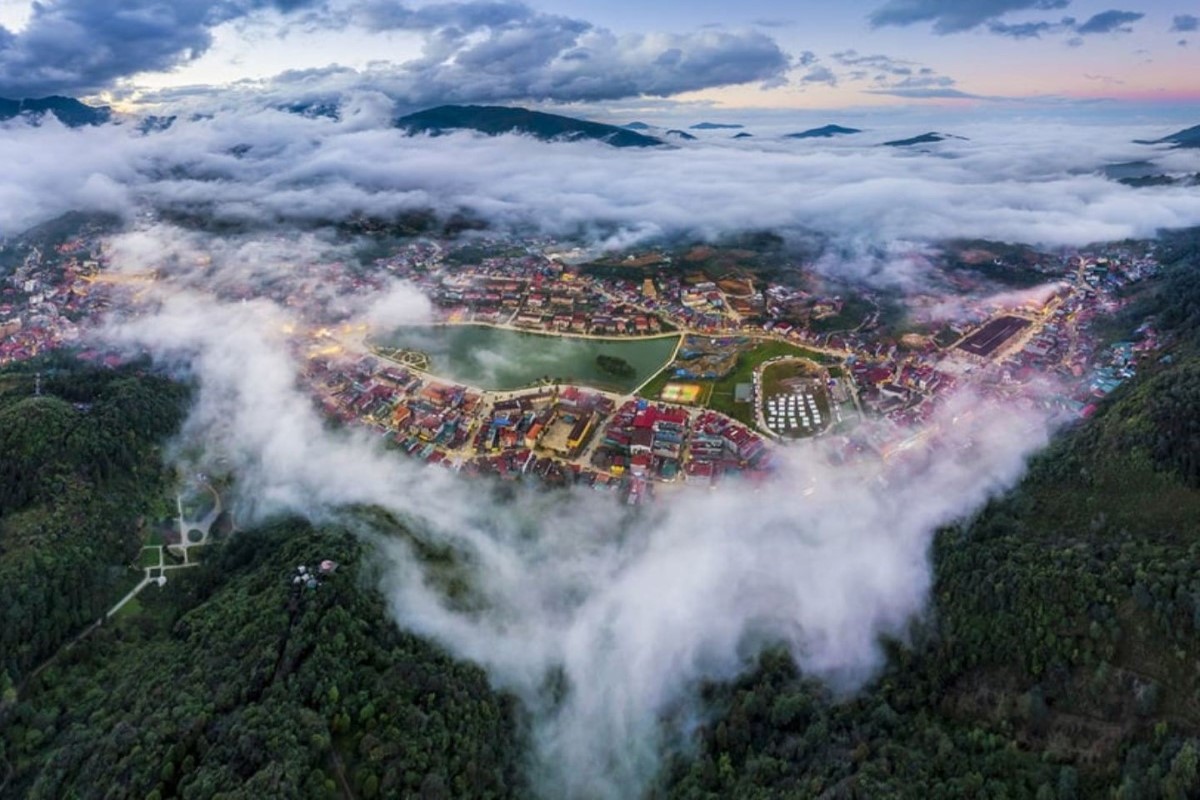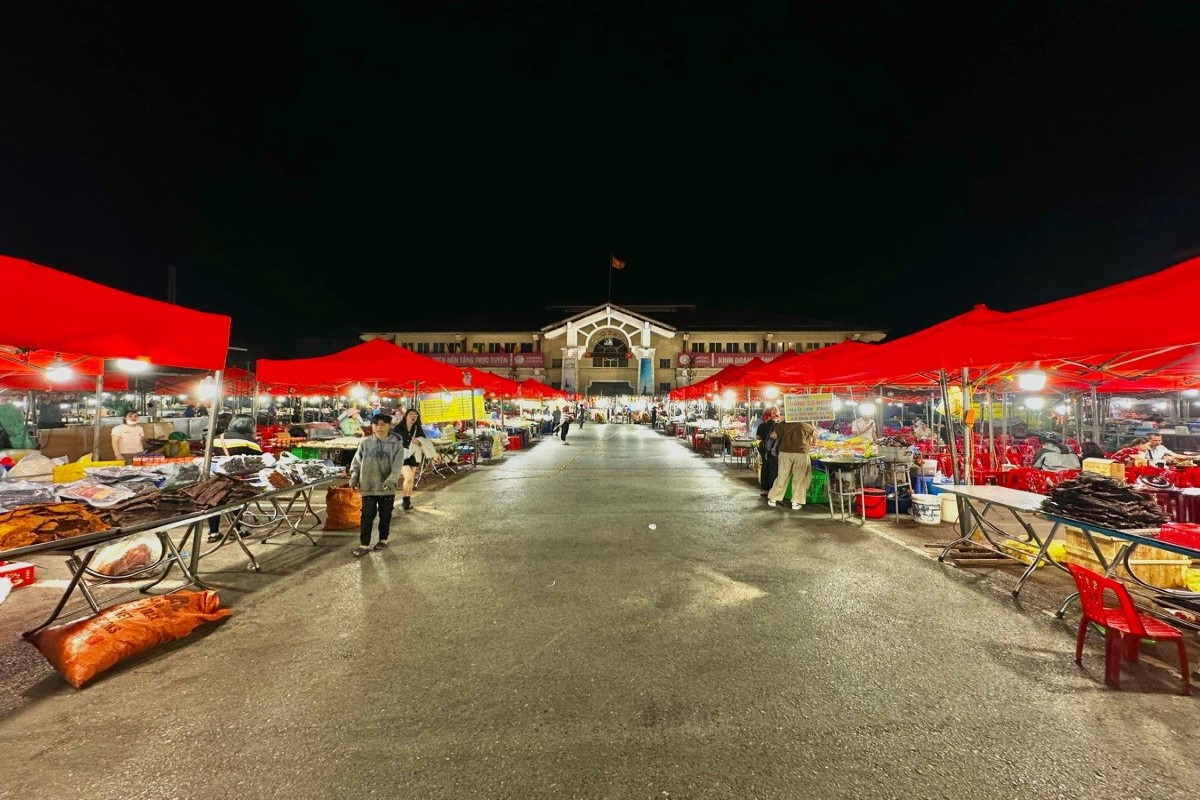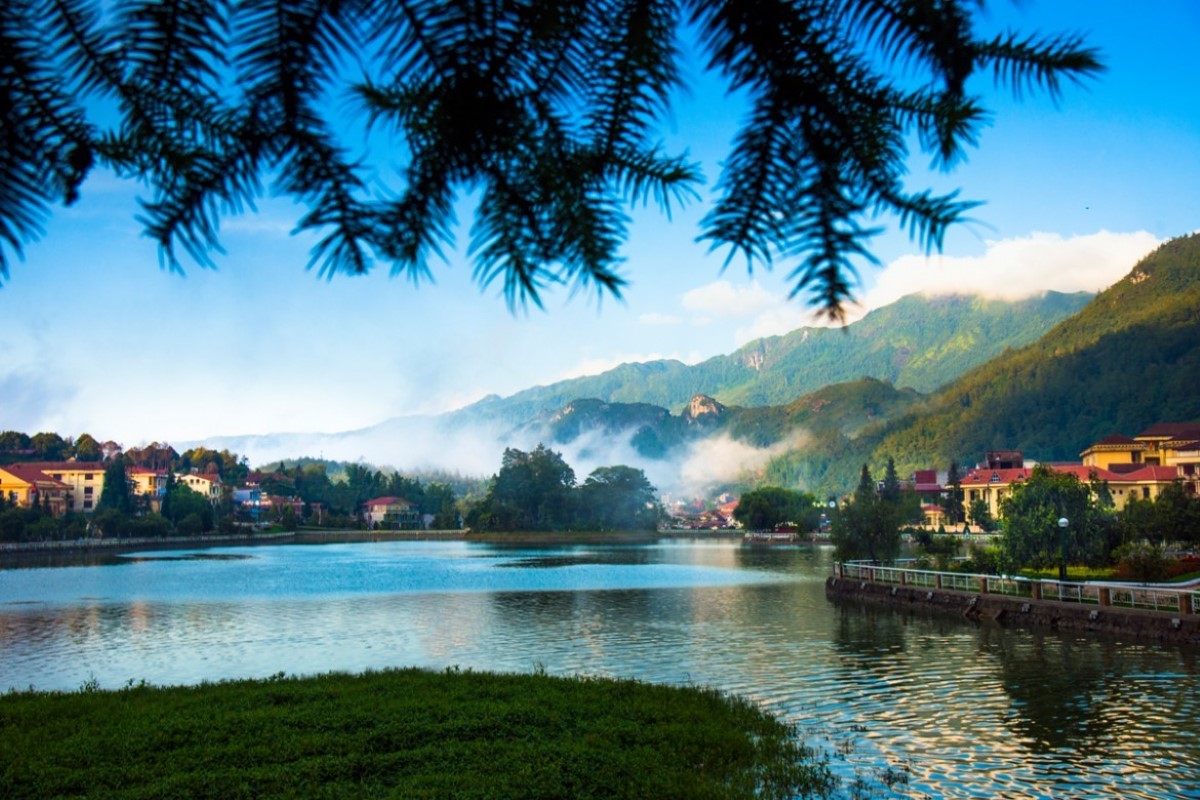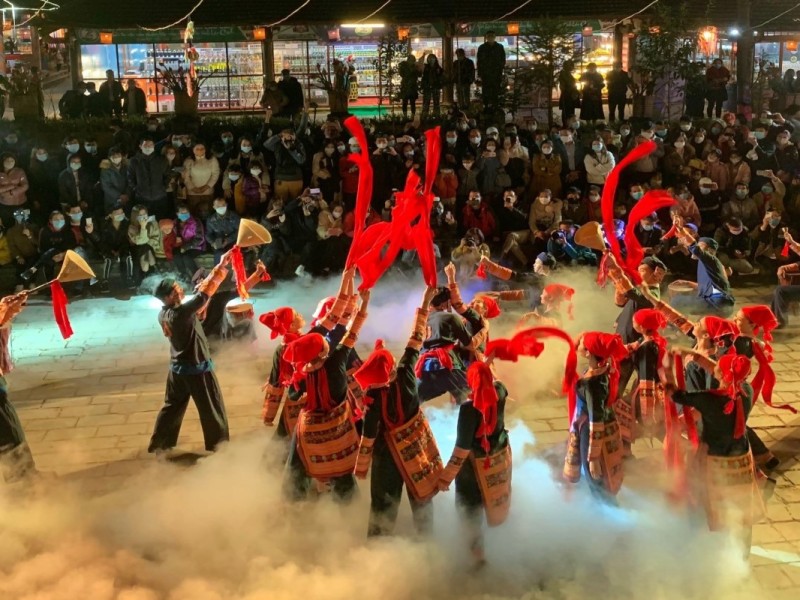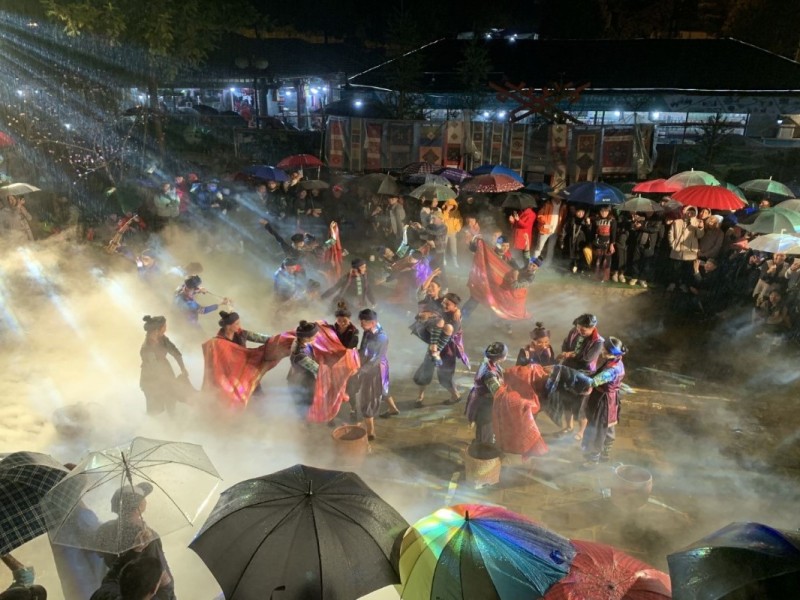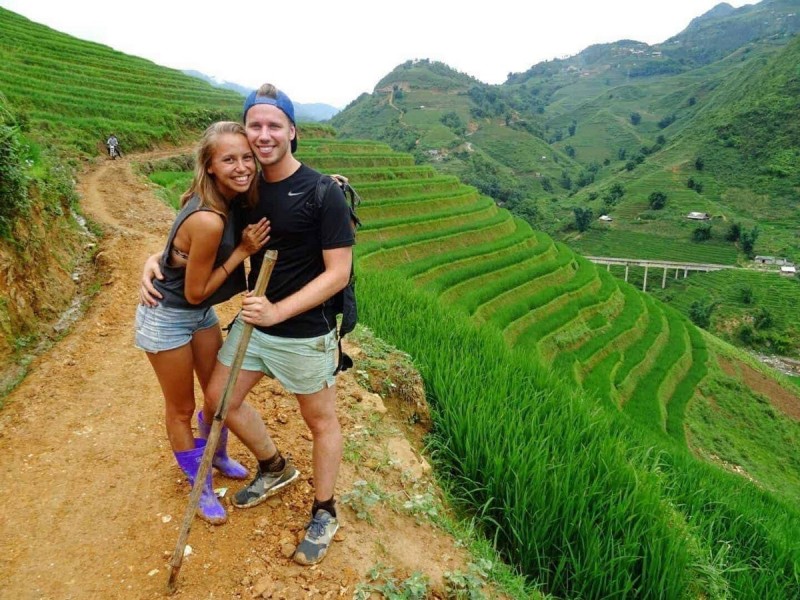Ta Phin Village Sapa: Complete Travel Guide, Activities & Tips
Ta Phin Village in Sapa is a peaceful ethnic minority village known for its rich Red Dao culture, scenic rice terraces, and authentic homestay experiences. Visitors can enjoy herbal baths, embroidery workshops, and trekking, making it a top destination for cultural immersion and relaxation near Sapa.
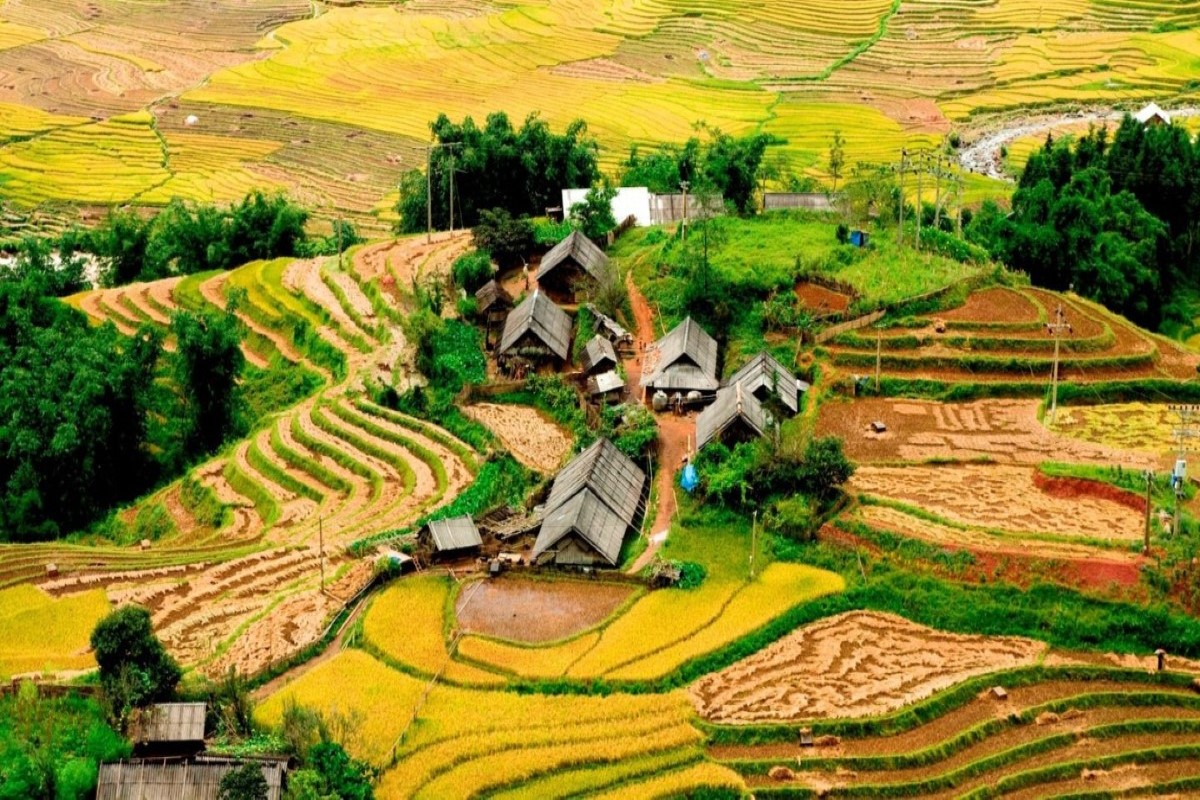
Discovering Ta Phin Village: What Makes It Special
Tucked quietly into the green folds of northern Vietnam, Ta Phin Village feels worlds apart from the lively buzz of Sapa just a short drive away. If you’re craving an authentic escape, this tranquil village rewards you with a deep sense of peace the moment you arrive. Here, ancient traditions shape each day, local people share stories as vivid as their traditional clothing, and rice terraces tumble down the slopes in perfect harmony with the rhythm of the land. It’s not just the scenery or the slower pace that sets Ta Phin Village apart—it’s the sincerity you’ll find in every detail. You come for the scenery, but you stay for the feeling of genuine connection. Ready to experience an authentic Ta Phin Village adventure and discover why this corner of rural Vietnam is so beloved by those who seek something more than the usual route? Start exploring the unique spirit of this hidden gem, and let the journey inspire you to go further.
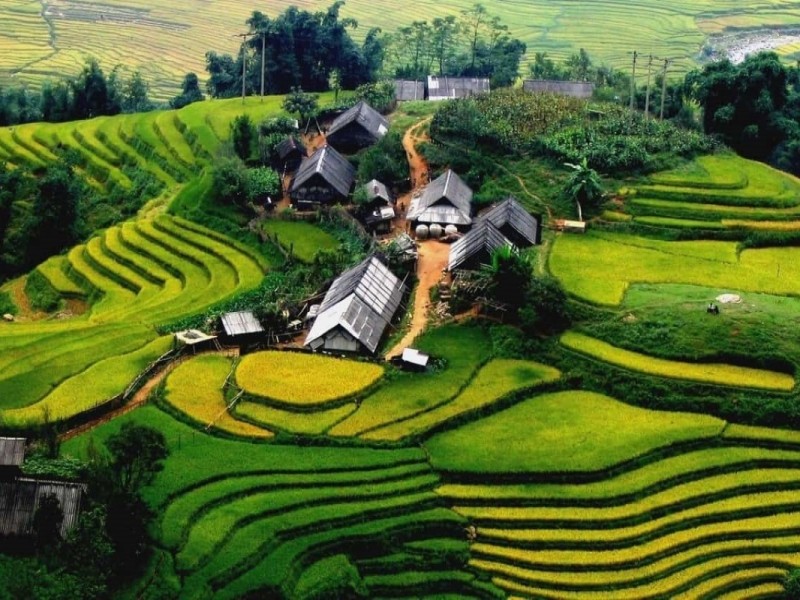
Where Exactly Is Ta Phin Village?
If you’re wondering where to find the authentic heart of northern Vietnam, look just northeast of bustling Sapa for Ta Phin Village. This peaceful village lies about 12 kilometers from the center of Sapa, making it both accessible and delightfully off the main tourist path.
Pinpointing the Village on the Map:
When you search “Where is Ta Phin Village?” you’ll find it nestled in a wide valley ringed by rugged mountains, lush forests, and endless rice terraces. The village sits approximately 12 km northeast of Sapa, reached by a scenic road that winds past waterfalls and hillside hamlets. It’s close enough to other well-known Sapa landmarks to make for an easy day trip, yet feels like a different world entirely. For a clearer perspective, consider viewing an interactive map to see how Ta Phin Village is framed by dramatic landscapes and tucked away from the main flow of visitors.
- Exact location: About 12 km northeast of Sapa town
- Geographical setting: Wide valley, surrounded by forested mountains
- Signature landscape: Terraced rice fields, winding rural roads, small streams
- Notable proximity: Near well-known Sapa attractions, yet still secluded
The unique geography of Ta Phin Village makes it easy to reach from Sapa but offers the promise of an entirely different experience, rooted in tradition and natural beauty. If you’re curious about the route or want to see where this authentic destination fits into your journey, explore the map and plan your route to one of Sapa’s most genuine escapes.
Curious to see how Ta Phin Village connects to the rest of your Sapa itinerary? Use this as your launching point for a trip that goes beyond the usual tourist trail.
Getting to Know the Local Setting:
Stepping into Ta Phin Village, you’ll notice the landscape opening around you—scattered wooden homes set among emerald rice terraces, narrow paths threading through vegetable gardens and fields. Life here flows to the quiet rhythm of the countryside. Early morning mists rise from the paddies, roosters call from shaded corners, and laughter carries across open spaces as families tend to daily chores. The soundscape is pure and calming—birdsong, distant voices, the gentle rush of water in small irrigation streams.
- Village layout: Clusters of traditional houses dotted across the valley
- Surroundings: Terraced fields, wildflowers, grazing buffalo, fruit trees
- Atmosphere: Quiet, rural, immersed in nature’s soundtrack
- Local movement: People travel by foot or motorbike along narrow, winding tracks
If you’re drawn to places where the air feels fresher and time moves slower, Ta Phin Village delivers a rural atmosphere that’s both grounding and inspiring. Experience the simple joys of village life and the unfiltered charm that makes this place unforgettable.
The landscape and environment of Ta Phin Village invite you to slow down and truly connect with rural Vietnam. Let the sights and sounds guide you as you prepare for a visit where nature and culture intertwine at every turn.
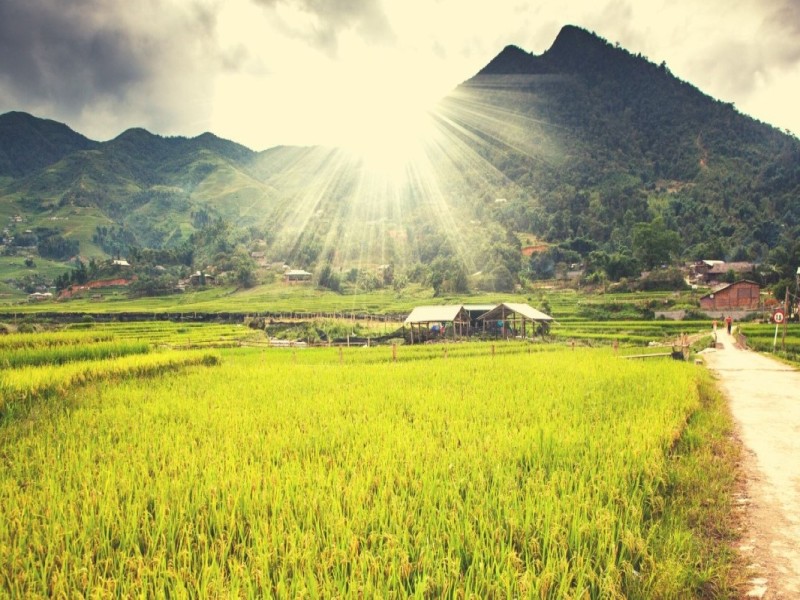
The Heart of Red Dao and Black Hmong Culture
You can’t truly understand Ta Phin Village until you meet the people whose roots run deep in its hills. This is the living heart of two remarkable ethnic groups, the Red Dao and the Black Hmong, whose presence and traditions shape the rhythms of daily life here.
Who Are the Red Dao and Black Hmong?
When you first arrive in Ta Phin Village, it’s the vibrant colors that catch your eye—especially the striking red headscarves of the Red Dao women and the deep indigo clothing of the Black Hmong. Both groups have called this land home for generations. The Red Dao in Ta Phin Village are instantly recognizable by their elaborate, embroidered costumes and the signature red turbans that many women wear. Their history here stretches back centuries, marked by resilience in the face of changing times and a deep commitment to community traditions.
The Black Hmong are equally distinctive, known for their indigo-dyed hemp garments and intricate silver jewelry. Their culture is woven into the fields, the festivals, and the storytelling that animates every gathering. Despite challenges and outside influences, both communities have preserved their languages, rituals, and unique sense of identity, offering visitors a glimpse into a world where heritage is not just remembered, but lived every day.
- Red Dao: Red headscarves, detailed embroidery, herbal traditions
- Black Hmong: Indigo clothing, silver jewelry, traditional farming
- Resilience: Strong cultural roots, community bonds
- Distinctive features: Language, rituals, crafts, and celebrations
Learning about the Red Dao and Black Hmong helps you see Ta Phin Village not just as a destination, but as a living, breathing culture waiting to be discovered. Embrace this opportunity to witness traditions that have survived—and thrived—through generations.
Ready to meet the people who make Ta Phin Village extraordinary? Plan your visit with an open mind and a respectful curiosity for the unique stories that await.
How Traditions Shape Village Life:
Every day in Ta Phin Village begins with the hum of daily routines—families tending to rice and corn fields, children helping their elders, and artisans working on age-old traditional crafts. Agricultural practices still follow the cycles of the seasons, with planting, harvesting, and community celebrations marking each stage. Handicrafts like embroidery, weaving, and silverwork are not just souvenirs; they are vibrant expressions of cultural identity, often passed from parent to child.
- Daily routines: Early mornings in the fields, family chores, communal meals
- Agriculture: Rice terraces, corn plots, small-scale farming
- Crafts: Embroidery, weaving, silver jewelry
- Family and community: Shared tasks, collective celebrations, strong support networks
For visitors, these traditions are not hidden—they’re visible in every corner of Ta Phin Village. You might see women stitching intricate patterns outside their homes, elders teaching children about medicinal herbs, or neighbors coming together for a festival. Every moment is a window into the strength and spirit that keep this community connected.
By experiencing the everyday life of Ta Phin Village, you gain much more than memories—you gain perspective and respect for the generations that have shaped this land. Discover the living culture that makes every encounter in Ta Phin Village truly meaningful, and let your journey inspire a deeper curiosity for Vietnam’s ethnic mosaic.
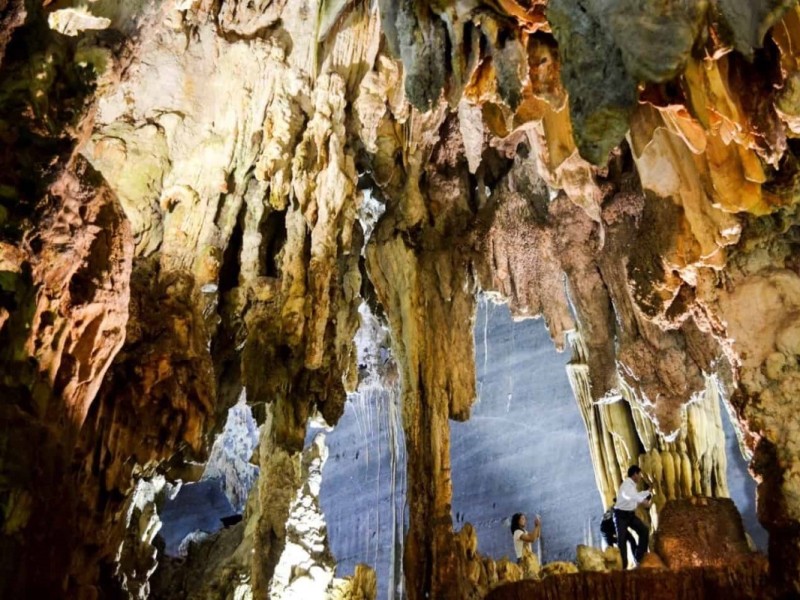
A Glimpse Into Village History
Every visit to Ta Phin Village is a step into living history—one that blends ancient stories with the realities of rural life today. If you’re curious about how this community came to be, the answer is woven through its fields, legends, and resilient spirit.
Legends, Heritage, and Modern Changes:
The story of Ta Phin Village begins in the folds of the mountains, where families of the Red Dao and Black Hmong first settled generations ago. Local lore tells of ancestors seeking fertile land, guided by dreams and signs from nature. Over the years, the village grew, anchored by shared values, agricultural cycles, and a deep connection to the land. Some say the mists that rise from the valley each morning are spirits of those who first shaped this place.
Key moments in Ta Phin history are marked not just by legends, but by perseverance—surviving harsh seasons, colonial pressures, and, in recent decades, the increasing arrival of visitors. The dawn of rural tourism brought new opportunities: income for families, improved infrastructure, and a wider audience for traditional crafts. At the same time, the Ta Phin tourism impact is a story of balance. While homestays and tours have lifted many out of poverty, locals work hard to preserve their unique heritage, language, and rituals in the face of outside influence.
- Village origins: Settled by Red Dao and Black Hmong ancestors in search of fertile land
- Heritage: Oral legends, spiritual practices, and shared communal spaces
- Key changes: Introduction of tourism, expansion of homestays, improved access roads
- Preservation: Ongoing efforts to keep ceremonies, crafts, and language alive
Even as modernization touches Ta Phin Village, its character and authenticity endure. Elders still tell old stories by firelight, children learn ancestral skills, and the village’s quiet dignity persists despite changing times.
If you want to travel thoughtfully, take time to listen to the stories that shaped Ta Phin Village. Your respect for its past and present helps ensure its unique identity continues to thrive for generations to come.
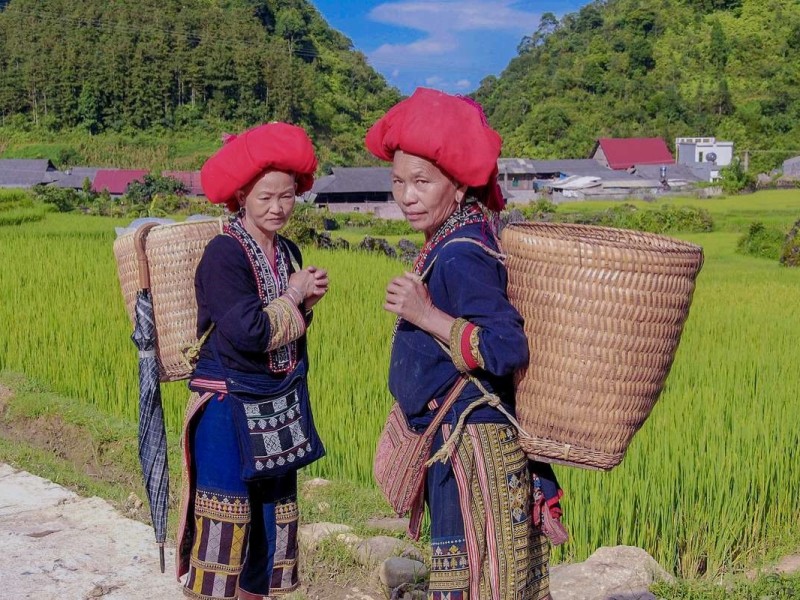
Is Ta Phin Village Worth Visiting? (Your Definitive Guide)
If you’re asking yourself, “Is Ta Phin Village worth visiting?” the answer is a confident yes—especially if you crave an authentic Sapa village experience that’s a world apart from the usual crowds. This is where you’ll find genuine hospitality, deeply rooted traditions, and moments of peace that linger long after you leave. Culture seekers, trekkers, and anyone who values immersive travel will discover that Ta Phin Village is more than worth the journey. You’ll step off the beaten path and into a setting where connection, learning, and relaxation come naturally.
For those who want to know if this destination truly delivers, the honest verdict is clear: Ta Phin Village stands out for its authenticity, welcoming spirit, and the richness of daily life. If you’re ready to explore, keep reading to see what makes this village such a rewarding stop in northern Vietnam.
Still on the fence? Discover how an authentic Sapa experience at Ta Phin Village can transform the way you travel. Reach out to Asia Travel Links for planning advice tailored to your own interests and travel style.
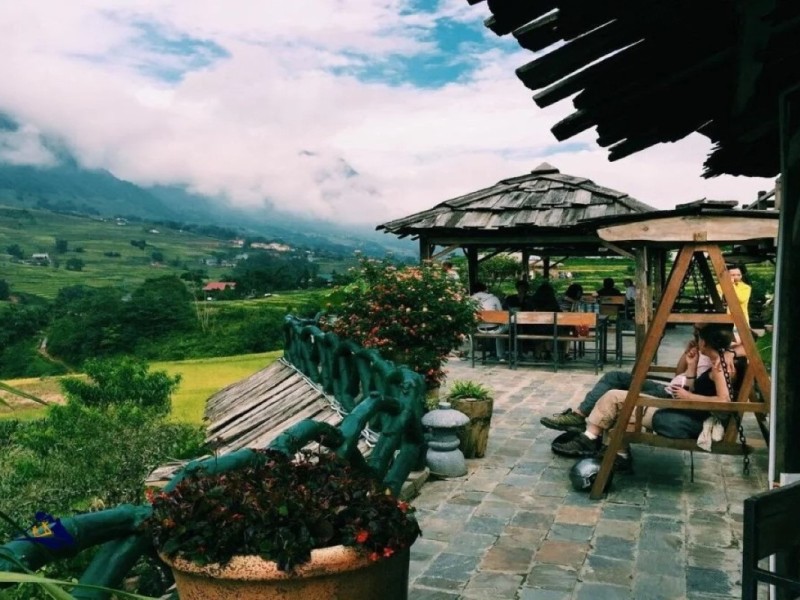
Ta Phin Village vs. Other Sapa Villages: What Sets It Apart?
If you’ve explored the region or even just read about northern Vietnam, you know that Sapa is home to several villages—each with its own flavor and character. Comparing Ta Phin Village to more famous spots like Cat Cat or Lao Chai helps you see why so many travelers choose to stay or return here.
While Cat Cat is the most popular with day-trippers and bustling with souvenir shops, and Lao Chai often features on group trekking itineraries, Ta Phin Village quietly shines in its own way. It’s less commercialized, offers more genuine daily interactions, and lets you immerse yourself in a lifestyle that’s still true to its roots.
- Authenticity: Ta Phin Village is much less commercialized than Cat Cat, so you’re more likely to experience spontaneous, real moments with locals.
- Cultural Immersion: Nowhere else in the region offers a stronger focus on Red Dao culture—herbal baths, embroidery workshops, and family-run homestays are everyday life here.
- Tranquility: If you crave peace and space to explore, Ta Phin Village has quieter trails and a calm, rural atmosphere you won’t find in the more crowded villages.
- Accessibility: Close enough to Sapa for an easy trip, but far enough for an authentic escape. You won’t be competing with big tour groups for the best experiences.
When you compare the best Sapa villages, the case for Ta Phin Village is clear—genuine connection, deep cultural discovery, and plenty of room for independent adventure. Think about what you value most in a destination, and you’ll see why so many choose to make Ta Phin Village a priority.
Want help deciding if Ta Phin Village fits your dream trip? Contact Asia Travel Links for personalized insights and up-to-date advice.

The Authentic Charm: Why Ta Phin Village Delivers a Unique Experience
The true magic of Ta Phin Village lies in its authenticity—a quality that sets it apart from so many destinations touched by tourism. When you arrive, it feels as if you’ve stepped back in time. Here, the rhythms of village life remain beautifully unhurried, and every detail is shaped by generations of tradition.
You’ll sense the difference immediately. Locals greet you not as a transaction, but with a genuine warmth that’s impossible to fake. It’s common to be welcomed into a family home, offered a seat around the kitchen fire, or invited to join in a daily task. There’s no rush, no pressure to move on to the next activity. Instead, you’re encouraged to slow down and experience the richness of real connection—sharing stories, learning from elders, and witnessing the everyday beauty of rural living.
The unhurried pace invites you to notice what’s often missed elsewhere: the sound of a loom in motion, the steam rising from a herbal bath, the laughter of children chasing chickens along narrow paths. In Ta Phin Village, these small moments become the highlight of your journey, and the sense of belonging grows stronger with every interaction.
When you crave an immersive experience—one that’s not scripted or staged, but honest and alive—Ta Phin Village delivers. The authenticity here is more than a selling point; it’s a living invitation to become part of a community, if only for a little while.
Want to step off the tourist trail and truly experience the heart of Ta Phin Village? Start planning your visit today and discover the magic of authentic connection.
Anya's Take on the Tranquil Escape
Most trips to Sapa begin and end with the bustling town, a vibrant hub of activity and commerce. But my recent journey wasn't just another visit to the mountains; it was a deliberate search for something quieter, a deeper connection to the land and its people. I sought an authentic Sapa village experience, and I found it in the serene embrace of Ta Phin Village, a place that promised a different kind of magic – a truly tranquil Sapa escape.
As the motorbike wound its way out of Sapa town, leaving behind the honking horns and souvenir shops, I felt a palpable shift in the air. The initial excitement of arrival in Sapa had been exhilarating, but a subtle yearning for peace had begun to stir. The road to Ta Phin, initially paved, soon gave way to a narrower, sometimes bumpy path, flanked by increasingly lush rice paddies. My expectations were simple: a glimpse into local life, perhaps a nice view. What I discovered was a profound sense of calm that settled over me the moment I arrived.
Stepping off the bike, the first thing that struck me was the quiet. Not a dead silence, but a living quiet – the gentle rustle of leaves in the breeze, the distant lowing of a buffalo, the soft murmur of conversations carried on the wind. The air, crisp and clean, carried the faint, comforting smell of woodsmoke from cooking fires and the earthy scent of damp soil after a morning mist. It was a symphony of subtlety, a stark contrast to the constant sensory input of urban life. I felt an immediate sense of being truly disconnected, truly immersed.
My most profound moment of unexpected tranquility came on my second afternoon. After a simple, delicious lunch at my homestay, I decided to just wander. No specific destination, no agenda, just allowing the village paths to lead me. I found myself walking through a narrow lane between two traditional wooden houses, their roofs adorned with drying corn. Suddenly, the lane opened up to a breathtaking vista: terraced rice fields, a vibrant emerald green, cascaded down the hillside, meeting the misty embrace of distant mountains. There was no one else around. I sat down on a smooth, sun-warmed rock, breathing in the fresh mountain air, and just watched. A Red Dao woman, her traditional red headscarf a splash of color, meticulously tended to her plot below. Her movements were rhythmic, timeless. The only sounds were the soft chirping of unseen birds and the whisper of the wind through the rice stalks. It was a moment of pure, unadulterated peace. My mind, usually buzzing with thoughts and plans, simply quieted. I felt a deep connection to the earth, to the rhythm of life here, and to the profound beauty of simplicity. It wasn't just a view; it was an experience of profound stillness that resonated deep within my soul. This was the true essence of an off-the-beaten-path adventure, a Sapa hidden gem that offered more than just sights – it offered a feeling.
This experience taught me the immense value of slowing down. In Ta Phin, true local immersion isn't about ticking off attractions; it's about being present, observing, and allowing yourself to be part of the village's gentle rhythm. The expertise I gained wasn't from a guidebook, but from simply being. I learned that the most profound connections often happen in silence, through shared smiles with children, or by simply watching daily life unfold. It's a place where the human spirit can truly breathe.
Actionable Practical Takeaways:
- Embrace the Journey: The road to Ta Phin can be a bit rough; consider a local motorbike taxi (xe om) for the most authentic and flexible experience, but be prepared for bumps!
- Pack for Comfort, Not Fashion: Sturdy walking shoes are a must for exploring the village paths and surrounding rice fields. Layers are key, as mountain weather can change quickly.
- Respectful Interaction is Key: Always ask permission before taking photos of people, especially children. A simple "Xin chào" (hello) and "Cảm ơn" (thank you) go a long way.
- Allow for Unplanned Moments: Don't over-schedule. The magic of Ta Phin often lies in the spontaneous encounters and quiet moments of observation.
- Support Local: Purchase handicrafts directly from the Red Dao women you meet; it directly supports their families and preserves their incredible traditions.
My time in Ta Phin Village was more than just a trip; it was a reset. It reminded me that the greatest adventures aren't always about grand monuments, but about the quiet moments, the genuine connections, and the profound sense of peace found in unexpected corners of the world. If you're seeking a place where time slows down, where culture is vibrant and untouched, and where your soul can truly find solace, then Ta Phin Village awaits.
Recommendation: I wholeheartedly recommend experiencing Ta Phin Village for yourself. It's an essential stop for anyone craving a truly authentic, peaceful, and culturally rich journey in the Sapa region. Go, breathe, and let the tranquility wash over you.
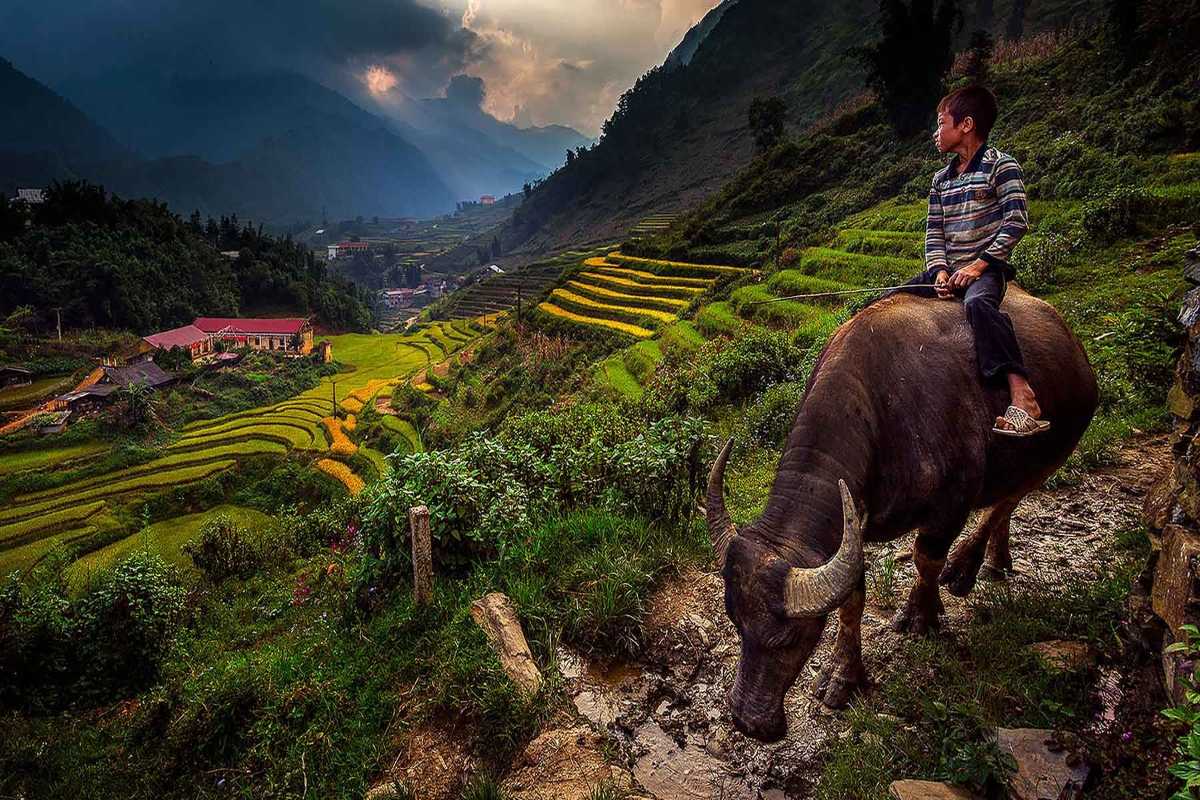
Getting to Ta Phin Village: Your Travel Options
Reaching Ta Phin Village is easier than you might think, but it does require a bit of planning and a willingness to embrace rural travel. Nestled just outside Sapa, this peaceful destination is accessible by several convenient routes—each offering a different experience of the northern Vietnam landscape. Whether you prefer scenic trekking, a quick ride, or a private transfer, knowing your options up front will help you make the most of your journey. If you’re wondering about the best ways of getting to Ta Phin Village, read on for clear, practical guidance to suit any style or schedule.
No matter which route you choose, reaching Ta Phin Village is part of the adventure. Let’s explore the ways you can get from Sapa to this unforgettable community—and find the travel method that’s right for you.
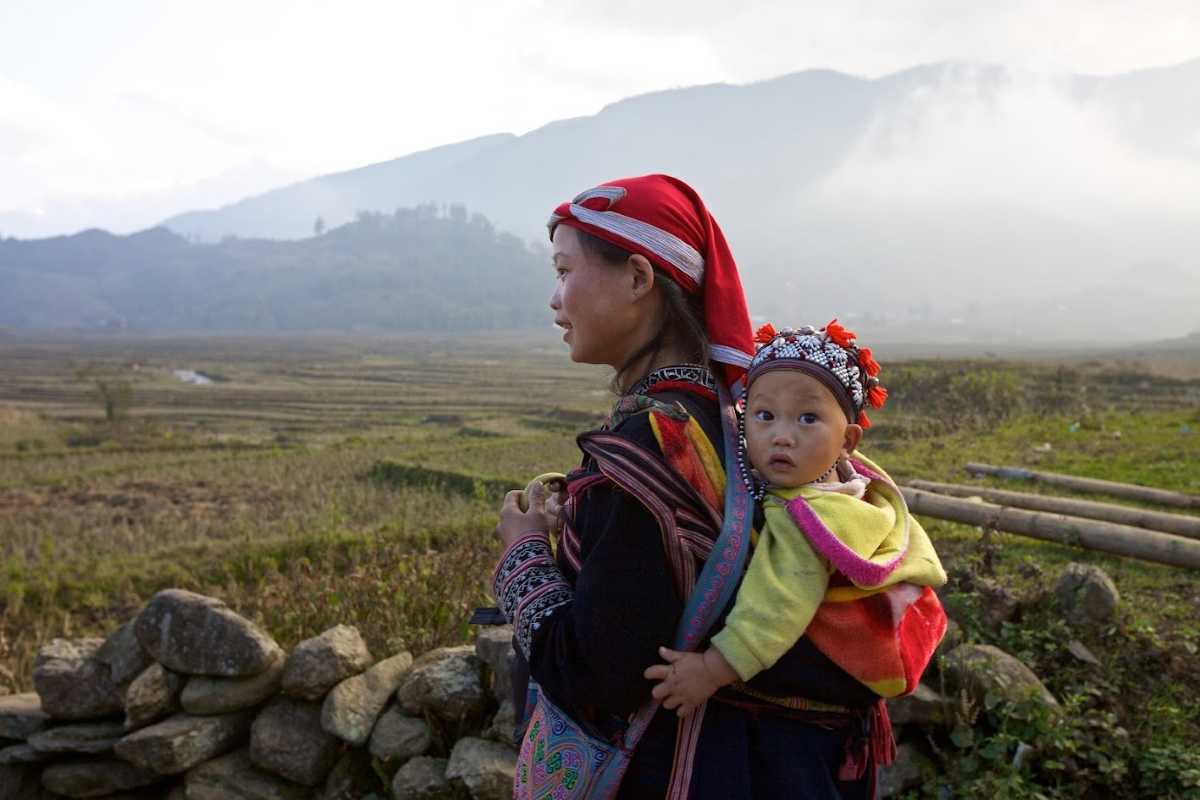
How to Reach Ta Phin Village from Sapa Town
Getting from Sapa to Ta Phin Village gives you a chance to see more of the local countryside. Each option has its own charm and level of adventure. Here’s how you can make the trip comfortably and safely.
Public Transport, Motorbike, and Trekking Routes:
You’ll find a range of choices for how to get to Ta Phin Village. The most popular include public and private transport as well as active routes for the adventurous.
- Motorbike: Renting a motorbike in Sapa is a favorite for independent travelers. Be sure to check for reliable motorbike rental Sapa shops, always wear a helmet, and ride with care—some road sections are steep or unpaved, especially after rain.
- Taxi/Grab: A direct taxi or Grab from Sapa to Ta Phin Village takes about 30 minutes and typically costs between 150,000–250,000 VND, depending on your negotiation and time of year. It’s convenient and comfortable for most visitors.
- Local Xe Om (Motorbike Taxi): Xe Om drivers are easy to find in Sapa. Negotiate the price up front (often 100,000–200,000 VND one-way), and don’t be shy about asking for a helmet. This is a flexible, local way to travel.
- Trekking: For those who love the outdoors, trekking from Sapa to Ta Phin Village is a highlight. You’ll pass rice paddies, cross streams, and catch panoramic views along the way. The route can take 3–5 hours depending on your pace and stops. Trekking with a local guide is strongly recommended, especially if you’re unfamiliar with the area or want cultural insights along the way.
Each option has its benefits, and your choice depends on your comfort with navigation, your interest in scenery, and your travel style. If you’re looking for adventure, try trekking or renting a motorbike. For convenience, choose a taxi or Xe Om.
Want advice on booking a safe, comfortable ride to Ta Phin Village? Contact us at Asia Travel Links for the latest tips and support.
Private Transfers and Local Tours:
If comfort, ease, or group travel is your priority, consider booking a private car, van, or joining a local tour from Sapa to Ta Phin Village.
- Private Car/Van: Booking a car or van is the most comfortable and direct option, ideal for families or those with luggage. Prices start around 400,000 VND for a one-way trip, with the benefit of flexible scheduling and door-to-door service.
- Local Tours: Several operators in Sapa offer guided tours to Ta Phin Village. These tours usually include transportation, cultural activities, and sometimes a meal or herbal bath. Prices vary depending on inclusions but generally range from 500,000–900,000 VND per person for a day tour.
- Insider Tip: Local guides add immense value by sharing cultural context, helping with language, and ensuring you get the most out of your visit.
- Booking: Tours and private transfers can be arranged online in advance or through your hotel or a reputable agency once in Sapa. Early booking is recommended in peak seasons.
Private transfers and organized tours take the hassle out of logistics and let you focus on enjoying the journey. For personalized booking help, email us or reach out on WhatsApp—we’re happy to assist.
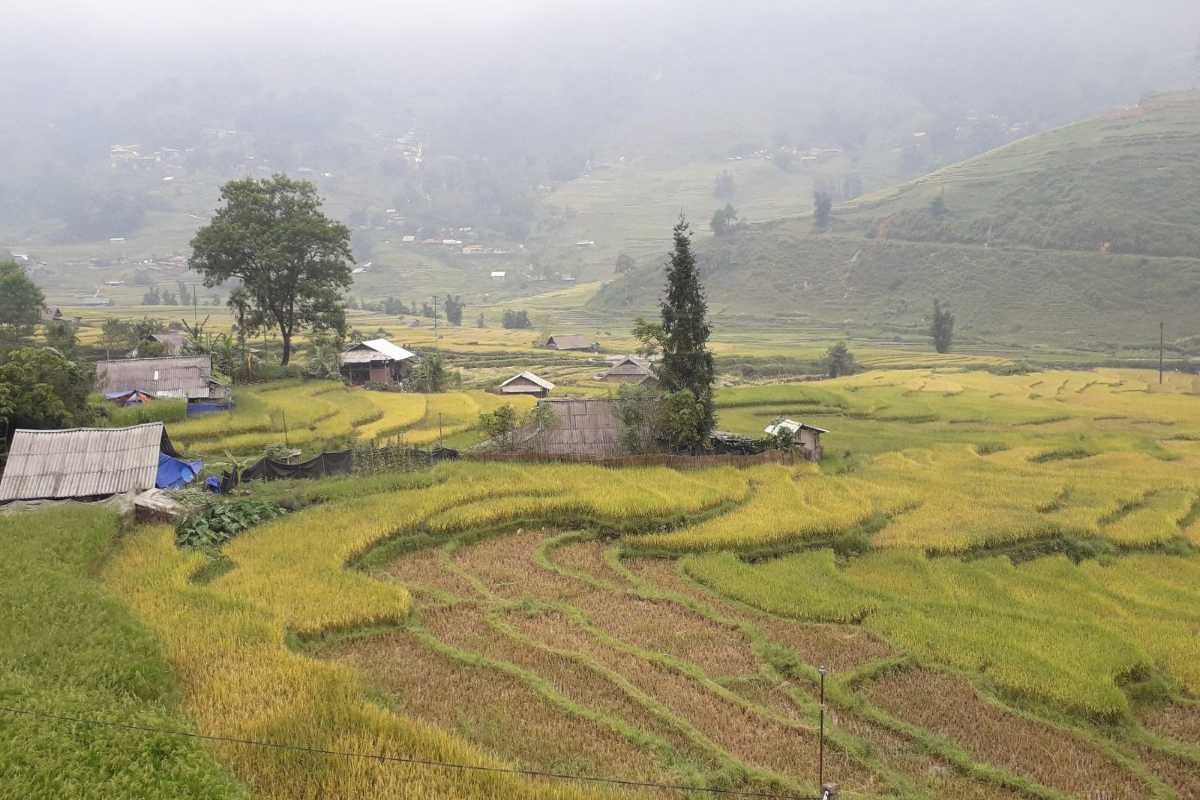
Coming from Hanoi or Lao Cai: Step-by-Step
Traveling to Ta Phin Village from outside the region is straightforward if you know what to expect at each stage. This mini-guide will walk you through the full journey, from the big city to the tranquil rice fields.
Train, Sleeper Bus, and Connection Tips:
If you’re coming from Hanoi to Sapa, you have several reliable options. Each provides a different blend of comfort, speed, and scenery.
- Train from Hanoi to Lao Cai: This is the classic way to start your adventure. Book tickets online or at the station (several reputable websites and agencies are available). Options range from soft seats to four-berth cabins for overnight journeys. The trip typically takes 7–8 hours and is known for scenic mountain views.
- Sleeper Bus from Hanoi to Sapa: Dozens of companies operate sleeper buses, which leave throughout the day and evening. Buses offer comfortable reclining seats or private cabins. The journey usually takes 5.5–7 hours. Booking is easy online or through your hotel.
- Connecting from Lao Cai to Sapa: When you arrive by train, you’ll find a line of mini-vans, taxis, and local buses waiting to take passengers up the winding mountain road to Sapa. Mini-vans are the most popular and cost-effective (roughly 50,000–70,000 VND). Taxis and buses are also available, with prices varying by season and demand.
For every stage, it’s best to book tickets in advance when possible—especially during weekends, holidays, or festival seasons. On arrival, keep your luggage close and use only official taxi or van services for safety.
- Train to Lao Cai: Book in advance, choose comfort level, enjoy mountain scenery
- Sleeper bus to Sapa: Multiple companies, various comfort levels, book online or via hotel
- Lao Cai to Sapa: Mini-vans, taxis, and buses available outside the station
If you want a seamless transfer all the way to Ta Phin Village, many local agencies in Sapa (including Asia Travel Links) can help organize the last leg from town to village.
Travel Time, Costs, and Local Advice:
Understanding how much time and money to budget for each leg will help you relax and enjoy the journey.
- Hanoi to Lao Cai by train: 7–8 hours, 250,000–500,000 VND for different berths
- Hanoi to Sapa by sleeper bus: 5.5–7 hours, 300,000–450,000 VND
- Lao Cai to Sapa: 1–1.5 hours by mini-van or taxi, 50,000–400,000 VND depending on transport
- Sapa to Ta Phin Village: 30–45 minutes by taxi, motorbike, or tour
Local advice: Book tickets with reputable companies or agencies, especially for trains and buses. Avoid accepting rides from unofficial touts at the station. On arrival in Sapa, verify costs before you board and check the condition of your vehicle. Expect some delays in peak seasons, and keep an eye out for beautiful scenery as you make your way up the mountains.
Taking a little time to plan will make your journey from Hanoi or Lao Cai to Ta Phin Village smooth and stress-free. If you want help with booking, schedules, or organizing a direct transfer, reach out to Asia Travel Links—we’re here to make the journey easier.
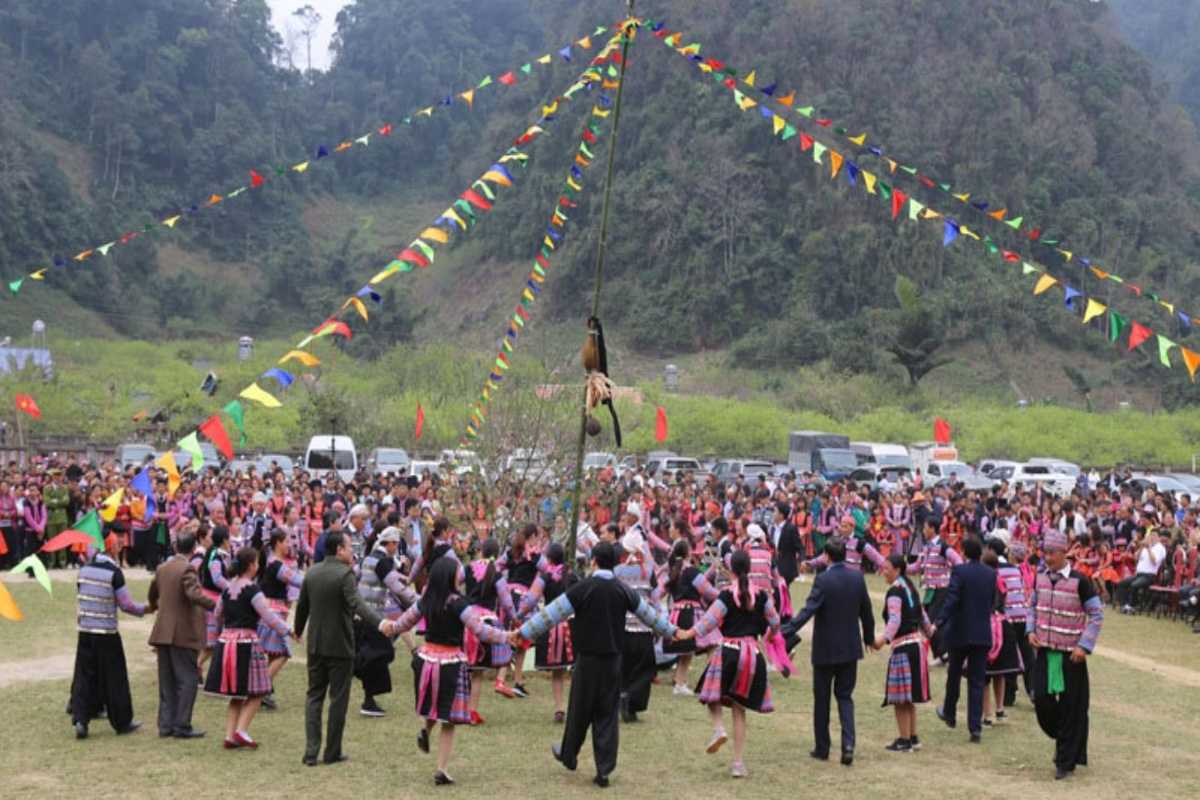
Essential Travel Tips for the Journey
Traveling to Ta Phin Village is straightforward if you know what to expect and prepare in advance. Whether you’re planning your first trip to rural Sapa or returning for a new adventure, a little forethought can make all the difference. Here’s how to be fully ready for a smooth, comfortable journey.
What to Pack and Prepare:
Packing smart means you’ll be ready for anything the mountains of Sapa might bring. Use this quick checklist to ensure you’re set for every part of your Ta Phin Village adventure.
- Comfortable walking shoes: Essential for uneven paths and trekking.
- Rain gear: Light waterproof jacket or poncho, especially for the rainy season.
- Warm layers: Temperatures drop quickly, even in summer evenings.
- Sunscreen: Mountain sun can be surprisingly strong.
- Insect repellent: Mosquitoes and bugs are common in fields and forests.
- Basic first-aid kit: Include plasters, antiseptic, pain relief, any personal medication.
- Power bank: Outlets can be scarce, especially in remote areas.
- Small backpack: Great for day trips, snacks, and keeping valuables close.
Having these essentials on your Sapa packing list means you’ll be prepared for changing weather, active days, and unexpected moments along the way. Travel light, but don’t leave the basics behind!
If you have any doubts about what to bring for Ta Phin Village, ask your host or reach out to Asia Travel Links for an updated checklist.
Weather and Road Conditions: What to Expect:
Knowing the weather and road conditions Sapa region can save you plenty of hassle and help you stay safe.
- Weather in Sapa: Expect misty mornings and quick shifts from sun to rain. Summer brings lush landscapes and occasional heavy downpours, while winters can be chilly with thick fog and rare frosts.
- Road conditions: Some routes to Ta Phin Village can become muddy or slippery, especially after rain. Always check the latest updates before your journey.
- Packing for trekking: Waterproof shoes or sandals with grip are a lifesaver in the rainy season. Always bring a dry change of clothes.
- Safety tips: Walk carefully on narrow, uneven, or wet paths. Take your time—there’s no need to rush on village roads.
- Seasonal packing: Add or remove layers depending on the time of year, and always plan for cooler nights.
Staying informed about Sapa’s weather and road conditions means you’ll enjoy the trip with fewer surprises and more peace of mind.
Wondering how to best prepare for a trip to Ta Phin Village in any season? Let us know your travel dates and we’ll help with the latest weather and road updates.
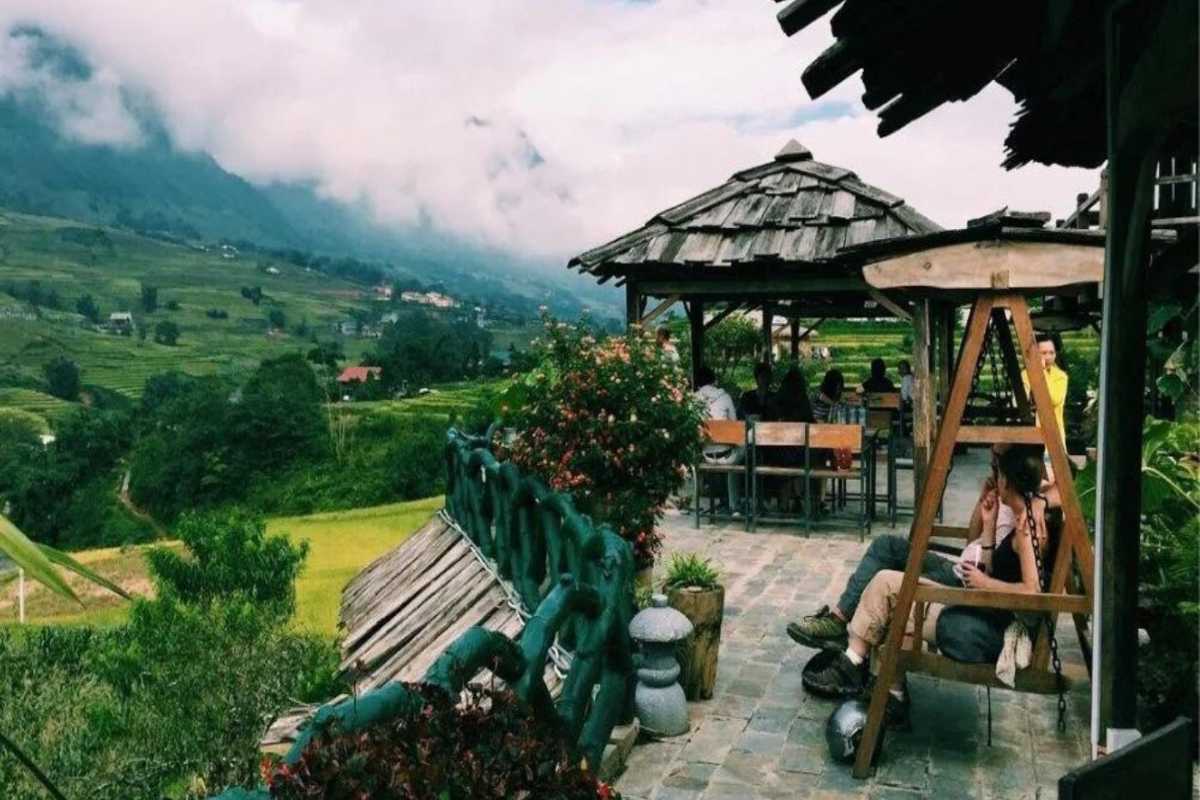
Authentic Village Experiences You Can’t Miss
The soul of Ta Phin Village reveals itself not just in its scenery, but in its hands-on, heartfelt encounters. Here, authentic village experiences go far beyond typical sightseeing. If you crave more than a photo opportunity—if you want to truly live, learn, and connect—Ta Phin Village offers you a chance to immerse yourself in local rhythms and traditions. Every activity is an open door to real cultural exchange, giving you memories and friendships that last long after you’ve left the hills of Sapa.
Curious what makes these moments so meaningful? Let’s dive into the best ways to become part of the village, if only for a little while. If you want to book a trusted guide or homestay, Asia Travel Links is always here to help you begin your journey.
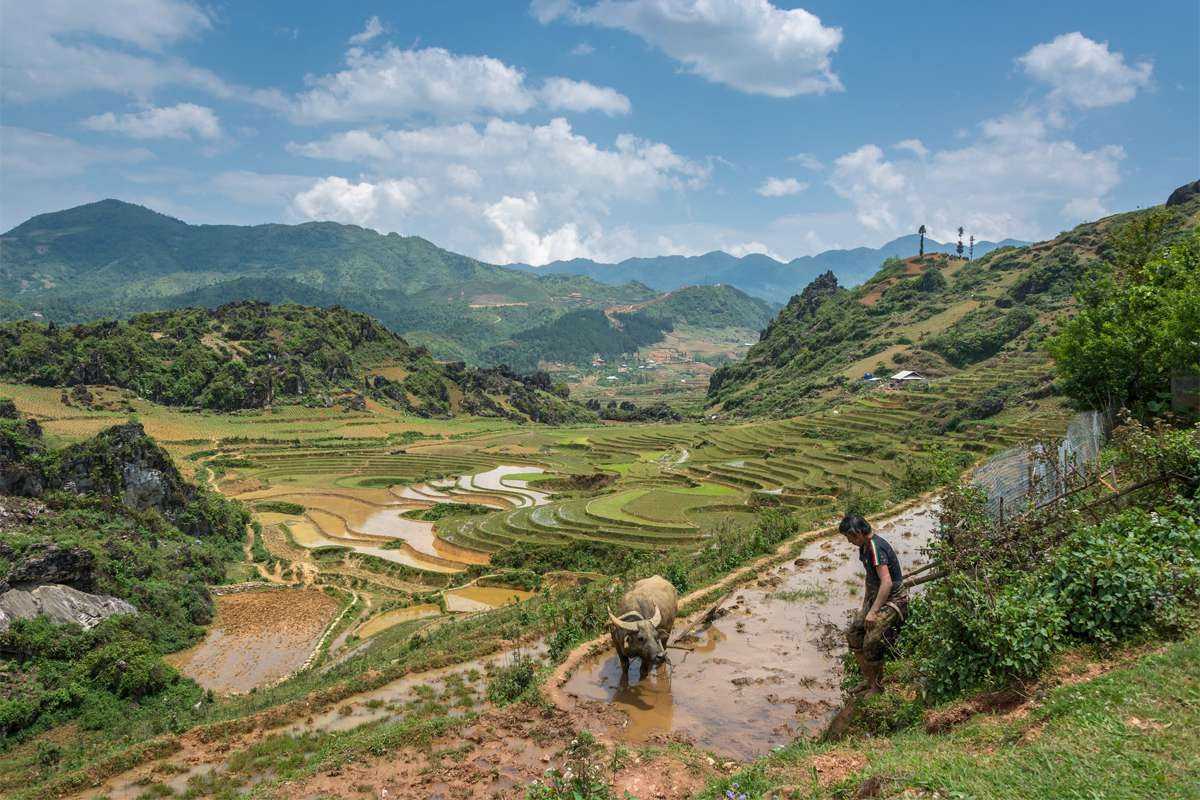
Joining a Local Homestay
For many travelers, the highlight of Ta Phin Village is staying right in the heart of a local family home. A Ta Phin homestay offers not just a bed for the night, but a window into daily life, traditions, and community warmth.
What Life Is Really Like Staying with Red Dao Families:
A night or two with a Red Dao family is the truest way to experience Ta Phin Village. Expect to be welcomed with open arms and treated like family from the moment you arrive. Shared meals bring everyone together—often cooked over an open fire, with recipes handed down for generations. Amenities are simple: think mattresses on the floor, mosquito nets, and clean but basic bathrooms. Yet, it’s the little touches—hand-embroidered pillows, a cup of herbal tea, laughter over dinner—that stay with you. You’ll have a chance to join in chores if you’re curious, learn about herbal baths or farming, and discover the pace of rural life.
- Shared meals: Hearty, home-cooked dishes served family-style, with rice, vegetables, and local specialties.
- Basic amenities: Simple beds, shared bathrooms, limited electricity—comfort rooted in tradition.
- Daily life: Opportunities to help with cooking, harvesting, or even try embroidery with your hosts.
- Warm hospitality: The joy of storytelling, music, and laughter around the fire.
- Cultural learning: Hear firsthand about Red Dao customs and values, and how they adapt to modern times.
By staying with a Red Dao homestay, you don’t just observe village life—you become part of it. These moments offer a depth of connection and understanding no hotel can match.
Ready to try life as a local? Book your Ta Phin Village homestay in advance, or contact us at Asia Travel Links for personalized recommendations.
Tips for Choosing and Booking Your Homestay:
To get the most from your Ta Phin homestay, it helps to know what to look for and how to plan.
- Research options: Search online for reviews, or ask for recommendations from fellow travelers or reputable guides.
- Ask about privacy: Clarify if you’ll have a private or shared room, and what bathroom facilities are like.
- Check meals: Find out what’s included—some stays offer three meals a day, while others only breakfast.
- Language: Some hosts speak basic English, but a translation app or phrasebook can help bridge gaps.
- Experience: Consider what activities are offered—herbal baths, trekking, or embroidery workshops can all be part of the experience.
Booking ahead is especially wise during festival seasons or weekends, when the best homes fill up fast. Reach out directly, or let us help you find and reserve the perfect spot for your needs.
Looking for an authentic village experience? Secure your Ta Phin Village homestay with a local family, and let your journey begin.

Hands-On Cultural Activities
For many travelers, the most vivid memories of Ta Phin Village come from rolling up their sleeves and joining the creative, flavorful, and wellness traditions that define local life. The hands-on cultural activities here invite you into the heart of the community, letting you learn by doing—and by connecting with those who call this valley home.
Ta Phin Embroidery Workshop
If you’re curious about the artistry behind the bright, intricate costumes worn in Ta Phin Village, a Ta Phin embroidery workshop is the perfect place to start. Here, you’ll meet Red Dao artisans whose nimble fingers turn thread and fabric into symbols of heritage and pride. Each pattern tells a story: geometric shapes that represent the mountains, rivers, or animals around the village, and colors chosen for luck, celebration, or remembrance.
You can join a short workshop (often organized at homestays or community houses) and try your hand at the basic stitches. Under the patient guidance of your host, you’ll quickly discover that this is no simple craft—it’s a meditative process that demands focus and care. Watching the women work is an education in itself, and they’re always happy to share the meanings behind the motifs and the reasons embroidery remains a living tradition.
- Introduction to patterns: Learn the stories behind each design and why they matter.
- Demonstration: Watch skilled Red Dao artisans embroider with speed and precision.
- Guided practice: Try simple stitches with hands-on help from your host.
- Finished keepsake: Leave with your own hand-stitched sample or choose a handmade souvenir to support the family.
- Conversation: Hear how embroidery is woven into daily life, special occasions, and the village economy.
Joining a Red Dao embroidery workshop isn’t just about learning a craft—it’s about experiencing the patience, resilience, and beauty of rural creativity. The workshop is suitable for all ages, and even a few minutes at the frame brings a new appreciation for artisan traditions.
Ready to discover the meaning in every stitch? Ask your homestay or contact Asia Travel Links for the best Ta Phin Village workshops available during your stay.
Herbal Bath Rituals—A True Village Highlight
Among the many traditions of Ta Phin Village, few are as beloved or memorable as the Red Dao herbal bath. This wellness ritual is deeply rooted in local history, passed down through generations as a source of healing, comfort, and connection to nature.
- Ancient origins: The herbal bath tradition dates back centuries, believed to restore strength and promote health after long days in the fields or major life events.
- Local ingredients: More than 20 types of wild herbs—like cinnamon, star anise, and fragrant leaves—are gathered from the mountains surrounding the village.
- The process: Herbs are boiled for hours in large wooden barrels, filling the air with aromatic steam. The water is poured into a wooden tub and kept at the perfect, soothing temperature.
- Duration and care: Baths usually last 20–30 minutes. Locals recommend soaking slowly and listening to your body—herbal blends can be surprisingly potent.
- Therapeutic benefits: Visitors describe relief from muscle aches, improved circulation, softer skin, and a deep sense of relaxation that lingers long after the soak.
Experiencing a Red Dao herbal bath isn’t just about physical renewal—it’s a moment of stillness and cultural insight, often accompanied by gentle conversation with your host. You leave feeling lighter, refreshed, and a little more connected to the spirit of the hills.
Ready for the most soothing experience in Ta Phin Village? Book a herbal bath in advance through your homestay, or ask Asia Travel Links for the best local spots during your visit.
David's Discovery: The Patience of the Needle
Most travel itineraries focus on seeing, tasting, and doing, but my trip to Ta Phin Village was different. I wasn't just looking for sights; I was searching for genuine connection, a deeper dive into the Red Dao culture. What I found was an unexpected challenge, a humbling lesson, and a profound appreciation for traditional Red Dao embroidery – an authentic Sapa village experience that transcended mere tourism.
The setting for my embroidery lesson was a simple, airy room in my homestay, bathed in the soft morning light filtering through a small window. On a low wooden table, vibrant skeins of thread lay alongside pieces of deep indigo fabric, already adorned with partially finished, impossibly intricate patterns. A Red Dao woman, her hands calloused but nimble, smiled warmly as she gestured for me to sit. Her quiet demeanor, combined with the focused intensity in her eyes as she demonstrated a stitch, immediately set a tone of respectful concentration. I felt a mix of excitement and a slight tremor of apprehension – my hands, usually accustomed to keyboards, were about to enter a world of delicate artistry.
She handed me a needle, thin and sharp, and a length of bright crimson thread. My task: to replicate a small, geometric pattern on a scrap of fabric. It seemed simple enough. It was not. My first attempt was a tangled mess, the thread refusing to cooperate, the stitches uneven and clumsy. The needle felt alien in my fingers, and the fine fabric seemed to resist my every effort. I quickly realized this wasn't just about pushing a needle through cloth; it was about precision, tension, and an almost meditative focus. My brow furrowed in concentration, my tongue instinctively poking out the corner of my mouth – a childhood habit resurfacing under pressure. The artisan watched patiently, occasionally reaching over to gently guide my hand, her touch light but firm, correcting a grip or demonstrating a subtle twist of the wrist. There were moments of humorous failure – a knot that refused to untangle, a stitch that went wildly off course, eliciting a soft chuckle from my teacher. But with each correction, each small success, a new kind of focus settled in. The outside world faded away. It was just me, the needle, the thread, and the tiny, evolving pattern.
As the minutes stretched into an hour, then two, I began to understand the true meaning of patience. The vibrant colors of the threads, the deep, rich indigo of the fabric, and the almost microscopic detail of the patterns became my entire world. I watched the artisan's hands, moving with an effortless grace that belied the complexity of the work. Each stitch was a tiny act of creation, building upon the last to form a larger, meaningful design. There was a quiet hum in the room, perhaps the distant sounds of village life, but mostly it was the soft rustle of fabric and the gentle click of the needle. Emotionally, I cycled through frustration, intense concentration, moments of triumph at a perfectly placed stitch, and overwhelming admiration. I felt a profound humility witnessing such skill, recognizing that what I was attempting in an hour took these women a lifetime to master. The finished products, hanging on display – bags, scarves, intricate clothing – suddenly held a new, deeper beauty, imbued with countless hours of dedicated labor and cultural significance. This wasn't just a craft; it was a living art form, a testament to resilience and heritage, truly a textile art that told stories.
My experience with the needle and thread provided an insider tip that no guidebook could convey: the true value of a handcrafted item. When you see the effort, the patience, and the cultural stories woven into each stitch, a simple embroidered bag transforms into a piece of art, a tangible connection to the Red Dao craftsmanship. I learned that many patterns aren't just decorative; they carry symbolic meanings, passed down through generations, telling tales of nature, family, and spiritual beliefs. This isn't just a skill for economic gain; it's a vital part of their identity, a way of preserving their history and traditions. Buying directly from the artisans isn't just a transaction; it's an act of supporting a living heritage, ensuring this beautiful art continues.
Actionable Practical Takeaways:
- Allocate Time: Don't rush the experience. Give yourself at least 2-3 hours to truly engage with the embroidery workshop.
- Be Patient with Yourself: It's harder than it looks! Embrace the learning curve and don't be afraid to make mistakes.
- Ask About Meanings: Inquire about the significance of the patterns you're working on or seeing. Each design often tells a story.
- Support Ethically: If you buy embroidered goods, try to purchase directly from the artisans or from reputable community cooperatives to ensure fair wages.
- Observe and Appreciate: Even if you don't participate, take time to watch the women work. Their dedication is inspiring.
My brief foray into Red Dao embroidery was a powerful reminder of the beauty in creation and the quiet dignity of human skill. It wasn't about mastering a craft, but about connecting with a culture through its most intricate expressions. I left with a newfound appreciation for the hands that create such beauty and a deeper understanding of the vibrant spirit of Ta Phin Village.
Recommendation: For anyone visiting Ta Phin Village seeking a truly immersive and meaningful cultural experience, I wholeheartedly recommend participating in a traditional embroidery workshop. It's a unique opportunity to connect with the Red Dao culture on a deeply personal level and gain immense respect for their incredible artistry.
Emily's Culinary Adventure: From Farm to Feast
My journey to Ta Phin Village was about peeling back the layers of a destination, not just skimming the surface. While many travelers seek out scenic treks or cultural performances, my deepest desire was to truly connect with the Red Dao culture through its heart: its food. This wasn't just another cooking class; it was an invitation into a family's kitchen, a hands-on journey from the earth to the plate, promising an authentic Sapa cooking class experience unlike any other.
The morning began with a gentle mist clinging to the rice terraces outside our homestay window. My host, a warm and perpetually smiling Red Dao woman named Mai, beckoned me into her simple, open-air kitchen. The air was already alive with the promise of food – the earthy scent of woodsmoke from the open fire, the subtle aroma of fresh herbs bundled on a small wooden table, and the faint, sweet smell of simmering broth. My expectations were high, but also wonderfully open-ended. I was ready to learn, to get my hands dirty, and to truly taste Ta Phin Village.
Mai started by showing me the ingredients, many of which had been harvested just that morning from their garden or foraging trips. Vibrant green vegetables, still dewy, sat beside plump, purple eggplants and fragrant bundles of cilantro and dill. She pointed to a small basket of wild mushrooms, explaining how they were gathered from the surrounding forest. This was truly a farm-to-table Sapa experience. Our first task was preparing "thang co," a traditional stew. I watched as Mai expertly chopped various cuts of meat, explaining each step in a mix of broken English and patient gestures. Then came the herbs – a fragrant explosion as she crushed ginger, lemongrass, and an array of local spices I couldn't name, but whose scents were intoxicating. The rhythmic thwack-thwack of her knife on the wooden board was a soothing soundtrack.
My turn came with the vegetables. I clumsily attempted to julienne carrots, my cuts far less uniform than Mai's, eliciting a gentle chuckle from her. The texture of the fresh greens, crisp and cool, felt invigorating against my fingertips. As the ingredients slowly made their way into the large, bubbling pot over the wood fire, the kitchen filled with an increasingly complex and mouth-watering aroma. The rich, savory scent of the simmering stew mingled with the sharp, clean notes of fresh herbs. We also prepared bamboo-tube rice, a fascinating process where sticky rice is packed into hollow bamboo segments and roasted over the fire, infusing it with a subtle, smoky flavor. The warmth of the fire on my face, the sizzle of oil in the pan as we stir-fried greens, and the shared laughter with Mai as I fumbled with a pair of chopsticks all contributed to a profound sense of connection. Emotionally, I felt a deep sense of joy and gratitude. This wasn't just a meal; it was a shared ritual, a passing down of knowledge, and a tangible expression of hospitality. The highlight was finally tasting the finished dishes. The "thang co" was surprisingly complex, deeply savory with a hint of spice, unlike anything I'd ever tasted. The bamboo-tube rice was perfectly cooked, tender and aromatic. Every bite was infused with the freshness of the local ingredients and the warmth of Mai's kitchen. It was a true culinary immersion, a testament to the genuine flavors of the region.
My unique insight from this experience was how food isn't just sustenance here; it's a direct reflection of the land, the seasons, and the community. Mai explained that many of the herbs and vegetables they use are wild-foraged, a deep knowledge passed down through generations. This demonstrated a profound expertise in their environment. I also learned the importance of balance in their cooking – not just flavors, but also the balance between what the land provides and what they consume. The act of sharing the meal, sitting together on low stools, laughing and gesturing, solidified a connection that words alone couldn't achieve. This Sapa homestay food wasn't just delicious; it was a lesson in living harmoniously with nature and each other.
Actionable Practical Takeaways:
- Ask for a Cooking Experience: Many homestays offer this, but it's not always advertised. Inquire when booking or upon arrival.
- Be Open to New Flavors: Red Dao cuisine uses unique herbs and spices. Embrace the opportunity to try something truly local.
- Participate Actively: Don't just watch! Get your hands dirty, ask questions (even with language barriers, gestures work wonders), and engage.
- Bring a Small Gift: A small, thoughtful gift for your host family (e.g., something from your home country, or a useful household item) is a kind gesture.
- Learn Basic Phrases: "Ngon quá!" (Delicious!) will earn you a big smile.
My time in Mai's kitchen was a highlight of my Ta Phin Village adventure. It was a reminder that travel isn't just about seeing new places, but about truly experiencing them – through their smells, their tastes, and the warmth of their people. If you want to dive deep into the heart of Red Dao culture, grab a knife and join the feast.
Recommendation: For an unforgettable and deeply authentic cultural experience in Ta Phin Village, I wholeheartedly recommend seeking out a traditional cooking experience with a local family. It's more than just a meal; it's a genuine connection to the heart and soul of the Red Dao people and their incredible culinary heritage.
Sarah's Soothing Soak: A Journey of Relaxation and Rejuvenation
After days of trekking through the misty mountains and vibrant rice terraces of Sapa, my muscles ached, and my mind, while invigorated, yearned for a different kind of immersion. I wasn't looking for a fancy spa; I was seeking something deeply rooted in local tradition, a true taste of the Red Dao culture. My quest led me to the famed Ta Phin herbal bath, an experience I'd heard whispers about – a ritual promising not just physical relief but a profound sense of peace. This was no ordinary bath; it was an ancient secret, an authentic Sapa wellness practice that promised to wash away more than just fatigue.
Stepping into the humble, wooden bathhouse in Ta Phin Village, I was immediately enveloped by a cloud of warm, aromatic steam. The air was thick with a complex, earthy scent – a blend of medicinal herbs, forest leaves, and something subtly sweet, almost like ginger and cinnamon. My initial feeling was one of curiosity mixed with a touch of apprehension; I wasn't entirely sure what to expect. The bath itself was a simple wooden tub, filled to the brim with a dark, opaque liquid that looked like strong tea. Wisps of steam curled lazily from its surface, inviting me in. My host, a kind Red Dao woman, gestured with a gentle smile, indicating the bath was ready. The setting was basic but deeply comforting, a world away from any modern spa, truly a traditional Sapa bath experience.
Gingerly, I lowered myself into the tub. The warmth was immediate and enveloping, a comforting embrace that seeped into my skin and bones. It wasn't scalding, but a perfect, consistent heat that quickly began to coax my tired muscles into relaxation. As I settled in, the aromatic steam rose around me, filling my lungs with its potent, invigorating fragrance. I could feel the herbs on my skin – a slight slickness, a subtle tingling sensation that was surprisingly pleasant. It felt as if every pore was opening, absorbing the goodness from the rich, dark water. My mind, which had been replaying trekking routes and daily plans, slowly began to quiet. The only sounds were the gentle lapping of the water as I shifted, and the distant, muffled sounds of village life outside – a child's laugh, a rooster crowing.
The deep relaxation was almost immediate. My muscles, which had been tight and protesting just moments before, began to soften, releasing their tension. An unexpected sensation was the feeling of lightness, as if the water was not just supporting my body, but lifting my spirit. I closed my eyes, breathing deeply, allowing the unique blend of scents to transport me. It was a journey of the senses, a truly sensory immersion into the heart of Red Dao traditional medicine. I emerged from the bath feeling utterly rejuvenated, my skin soft, my body light, and my mind clear and serene. It was more than just a bath; it was a profound cleansing, a holistic reset. This was the true essence of Sapa wellness, a secret passed down through generations.
My unique insight from this experience was the deep connection between the Red Dao herbal bath and their way of life. My host explained that the herbs are carefully selected from the surrounding forests, reflecting their intimate knowledge of nature and its healing properties. This isn't just a commercial offering; it's a vital part of their health and well-being, a practice deeply ingrained in their culture. I learned that different herbs are used for different ailments, showcasing their profound expertise in traditional remedies. The bath isn't just for tourists; it's a regular ritual for the villagers themselves, a testament to its efficacy and importance. This firsthand experience provided a deeper appreciation for their sustainable practices and their profound respect for the natural world. It truly felt like a Sapa hidden gem.
Actionable Practical Takeaways:
- Book in Advance: Especially during peak season or if staying at a popular homestay, book your herbal bath slot to avoid disappointment.
- Embrace the Simplicity: Don't expect a luxury spa. The beauty lies in the authenticity and the natural elements.
- Stay Hydrated: The heat can be intense. Drink plenty of water before and after your bath.
- Allow Time for Relaxation: Don't rush. Give yourself at least 30-60 minutes in the bath, and then some time to simply rest afterwards.
- Inquire About Herbs: If possible, ask your host about the specific herbs used and their benefits. It adds to the cultural learning.
The Ta Phin herbal bath was more than just a soothing soak; it was a journey into the heart of Red Dao culture, a testament to ancient wisdom, and a truly rejuvenating experience for mind, body, and soul. It was the perfect antidote to tired muscles and a bustling world.
Recommendation: If you visit Ta Phin Village, you absolutely must indulge in a traditional Red Dao herbal bath. It's an unparalleled experience of relaxation and cultural immersion, offering a profound sense of well-being that will leave you refreshed and deeply connected to the spirit of Sapa.
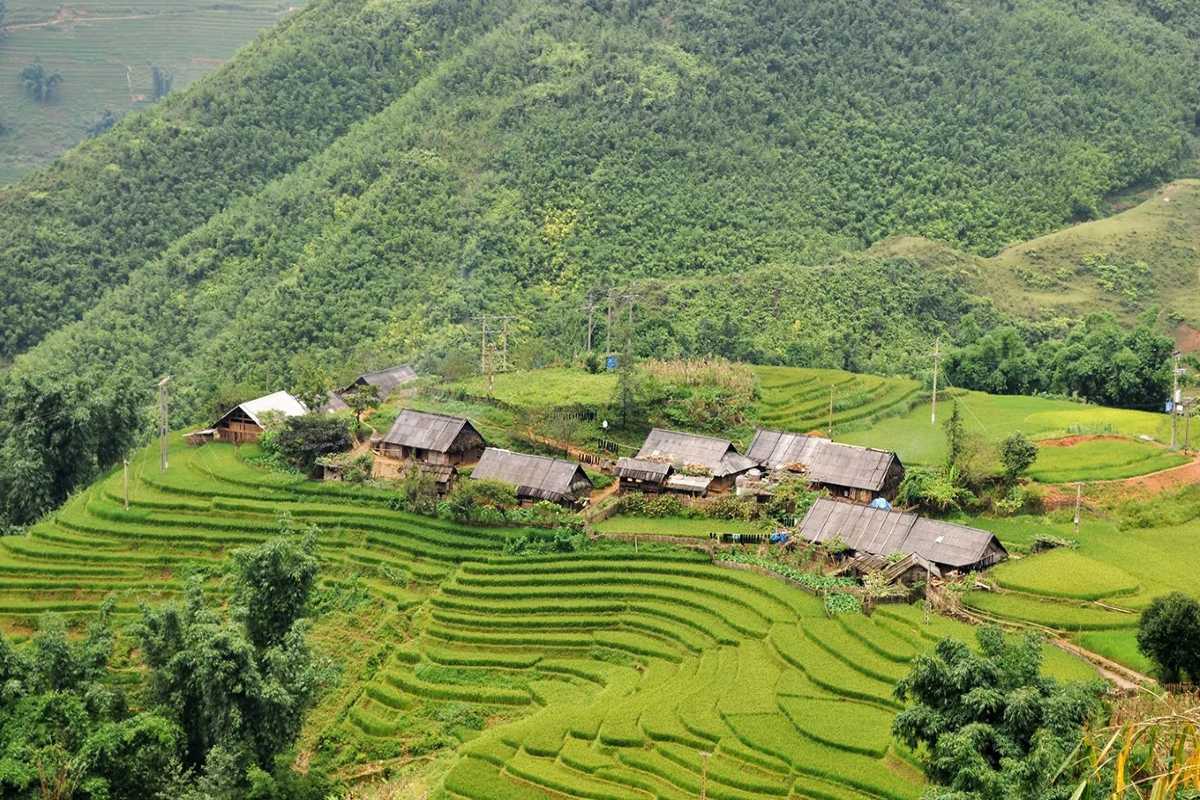
Village Walks and Daily Life Encounters
Wandering the paths of Ta Phin Village, you’ll find that some of the most rewarding experiences come not from scheduled tours, but from simple, genuine moments of connection. The rhythm of village life is slow and open—if you’re prepared with the right mindset and a little etiquette, every walk becomes a doorway to deeper understanding.
How to Respect Local Customs:
Respect is key when exploring daily life in Ta Phin Village or enjoying village walks Sapa. A few mindful actions go a long way toward building trust and leaving a positive impact.
- Always ask permission before taking photos of people, especially elders or children. A smile and a simple gesture are usually understood.
- Dress modestly—long pants and covered shoulders show respect, especially in temples or family homes.
- Avoid touching children's heads; in many cultures, this is considered disrespectful.
- Understand bargaining etiquette: Negotiating is common in markets, but do so politely and walk away if you can’t agree.
- Respect privacy. Don’t enter homes or farmyards without an invitation, and keep noise to a minimum in quiet areas.
Practicing these Sapa local customs ensures your presence is welcomed and appreciated. Remember, it’s about connecting as equals, not just observing from the sidelines.
Curious about other cultural tips for your time in Ta Phin Village? Reach out to Asia Travel Links for more pre-arrival advice or local etiquette resources.
Spontaneous Moments and Meaningful Exchanges:
Many of the most memorable encounters in Ta Phin Village aren’t planned—they’re the result of simply being open to the moment. Whether you’re strolling the narrow lanes or pausing at a field’s edge, keep your eyes and heart open for spontaneous connections.
- Children playing: You might be greeted by curious kids—smile, wave, and maybe join a simple game.
- Farmers at work: Watching a family plant rice or gather herbs, you can offer a friendly hello or ask (with gestures or basic Vietnamese) about their day.
- Women selling crafts: Instead of rushing by, take a moment to admire their handiwork. Even a short conversation or a compliment (with the help of a phrasebook) can make a big impression.
- Shared paths: If you find yourself walking alongside locals, greet them respectfully and match their pace—it’s a sign of good manners.
- Everyday exchanges: Sometimes, sharing a bench or a spot by the stream leads to a quiet moment of understanding or a surprising story.
Engaging with daily life in Sapa is about presence and curiosity—don’t rush, don’t script, just let the village unfold. If you want to deepen these connections, a local guide can help bridge language gaps and open even more doors.
For advice on planning respectful village walks Sapa or arranging a local guide, just ask us at Asia Travel Links.

Outdoor Adventures Around Ta Phin
Adventure is just outside your door in Ta Phin Village. Surrounded by rolling hills, lush forests, and panoramic rice terraces, this corner of Sapa offers endless ways to stretch your legs and fill your lungs with fresh mountain air. Whether you’re a casual walker or a determined trekker, outdoor activities here mean genuine connection with nature and glimpses of local life at every turn. Let’s explore the best trails, hidden sites, and scenic moments waiting for you. Ready to plan your route? Reach out to Asia Travel Links for custom advice or guided treks in the area.
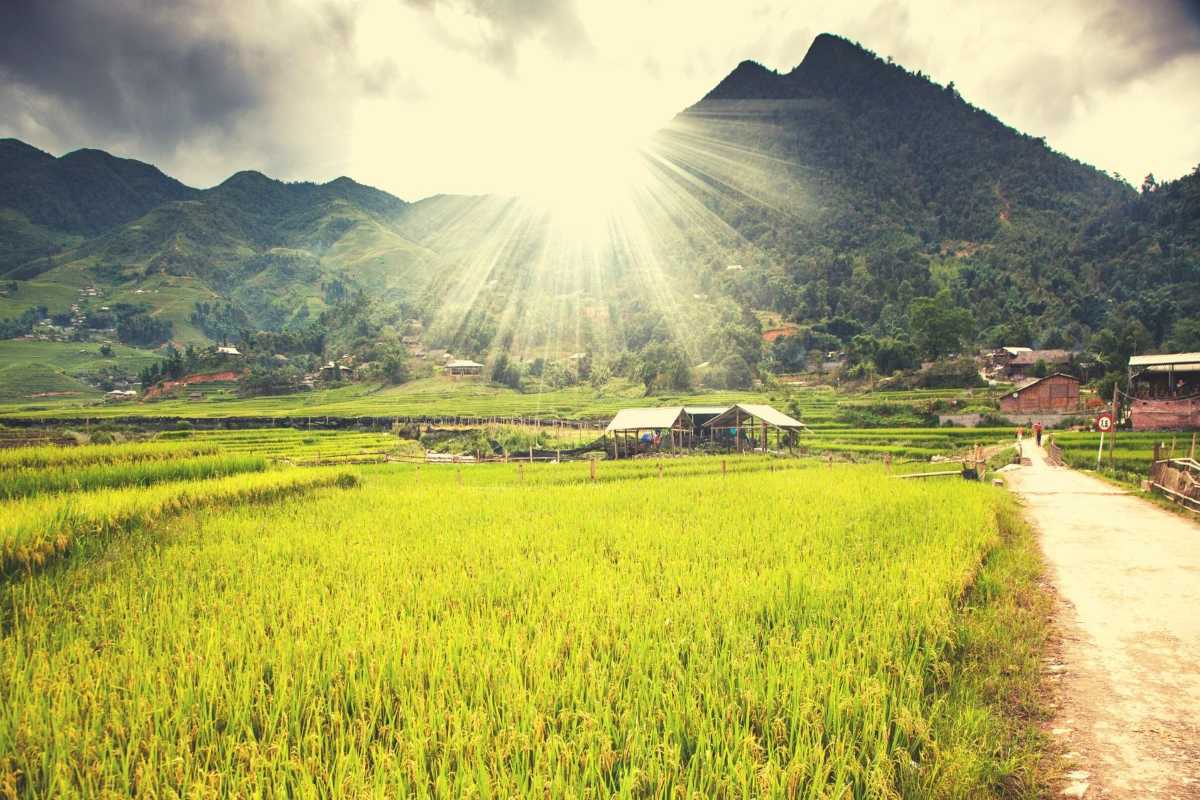
Trekking Routes and Scenic Trails
In Ta Phin Village, trekking is more than exercise—it’s a journey into breathtaking landscapes and community rhythms. From gentle paths to challenging climbs, every route reveals new perspectives on Sapa’s beauty.
Best Trekking Paths for Different Fitness Levels:
Whether you’re a first-timer or an experienced hiker, Ta Phin trekking offers something for everyone. Here are some favorite routes to match different abilities:
- Village Loop (Easy): A short walk around Ta Phin Village—1–2 hours on mostly flat trails, with plenty of photo stops.
- Ta Phin to Ma Tra (Moderate): About 8 km, 2–3 hours, following winding paths through rice terraces and small hamlets, with a few steeper sections.
- Ta Phin to Sapa Town (Challenging): 12–15 km, 4–5 hours, combining village paths, forest trails, and mountain views for those seeking a bigger adventure.
- Custom routes: Local guides can tailor treks based on your fitness and interests, from waterfall hikes to longer loops.
Checking weather, preparing snacks, and wearing sturdy shoes are key—ask your host or guide for the best route for the day. You’ll find options for all ages and energy levels, so everyone can enjoy Ta Phin Village on foot.
Want personalized recommendations or a private trekking guide? Asia Travel Links can match you with the perfect trail.
What You’ll See Along the Way:
The journey is as rewarding as the destination in Ta Phin Village. Trekking paths here unveil some of the most iconic landscapes and authentic moments in all of Sapa.
- Rice paddies: Marvel at stepped terraces that change color with the seasons—lush green in summer, golden in harvest.
- Bamboo forests: Wander shaded groves filled with birdsong and dappled light.
- Waterfalls and streams: Refresh at cool, hidden spots perfect for a break or a quick photo.
- Local homes: Spot traditional stilt houses and see daily life unfolding in the fields.
- Panoramic viewpoints: Stop at hilltops for wide-open views across valleys and peaks.
- Flora and fauna: Watch for butterflies, wildflowers, and—if you’re lucky—a glimpse of local wildlife.
Bring your camera and take your time; the slower you go, the more you’ll notice along these scenic trails.
Looking to capture the best scenes? Ask about sunrise or sunset treks for magical light and unforgettable photos.
Ben's Epic Trek: Conquering the Ta Phin Hills
Most people come to Sapa for the breathtaking views and the promise of a mountain adventure. But after a few days of exploring the more popular routes, I craved something more challenging, a trek that truly pushed my limits and offered a deeper immersion into the raw beauty of the region. I wasn't looking for a casual stroll; I wanted to experience the true grit and glory of Ta Phin trekking, to conquer its hills and earn those panoramic views that are so often promised but rarely truly delivered. This wasn't just another Sapa trekking experience; this was about pushing beyond the well-trodden paths into the heart of the landscape.
My day began before dawn, the air in Ta Phin Village still cool and damp with mist. My guide, a sturdy Red Dao man named Ly, met me with a quiet smile, his eyes twinkling with an unspoken understanding of the journey ahead. My expectations were high, but also tinged with a healthy dose of apprehension – I'd heard the trails around Ta Phin could be rugged. As we set off, the first rays of sun began to paint the sky in soft oranges and purples, slowly revealing the contours of the surrounding hills. The initial path was relatively gentle, winding through small patches of cultivation, but I knew this was just the warm-up.
Soon, the terrain began to assert itself. We started our ascent, and the path quickly narrowed, becoming a winding ribbon of packed earth and loose stones. The physical exertion was immediate and undeniable. My calves burned, and my breath came in short, sharp gasps as we navigated steep inclines, occasionally scrambling over exposed roots or slippery rocks. The air was thick with the earthy smell of damp soil and the fresh, invigorating scent of bamboo. I could hear the rhythmic crunch of Ly's sturdy boots ahead of me, a steady beat that kept me going. There were moments when the trail seemed to vanish into dense foliage, only for Ly to expertly point out a barely visible track. We crossed bubbling streams on makeshift bridges of logs and stones, the cold water splashing refreshingly against my ankles.
The rewards, however, were immediate and utterly breathtaking. Every time we emerged from a dense patch of forest or crested a particularly challenging hill, a new vista would unfold. The iconic rice terraces Sapa is famous for stretched out below us, a vibrant tapestry of emerald green and golden hues, meticulously carved into the hillsides. The mist, which had initially obscured the distant peaks, began to lift, revealing layer upon layer of majestic mountains fading into the horizon. The silence was profound, broken only by the occasional birdsong or the distant lowing of a buffalo. I felt a surge of pure joy and awe with each new scenic trail revelation.
Unexpected encounters were a highlight. At one point, we stumbled upon a small group of Red Dao children, their faces bright with curiosity, playing near a waterfall. Their laughter echoed through the valley, a pure, unadulterated sound. Later, we spotted a wild boar disappearing into the undergrowth – a fleeting glimpse of local wildlife that reminded me of the untouched nature surrounding us. My emotions throughout the trek were a rollercoaster: initial excitement, growing fatigue, moments of doubt on particularly steep sections, but always culminating in a powerful sense of triumph and wonder as I absorbed the incredible landscapes. The sheer scale of the mountains and the intricate beauty of the terraces resonated deeply, making me feel small yet connected to something vast and ancient.
My unique insight from this trek, and a crucial piece of demonstrated expertise, is that a local guide like Ly is absolutely indispensable for Ta Phin trekking. Not just for navigation (though that's vital on these less-marked trails), but for the cultural context and safety. Ly pointed out medicinal plants, shared stories of his ancestors, and knew exactly where to find the safest footing on slippery slopes. He understood the trekking difficulty of each section and paced our journey perfectly. His knowledge transformed a challenging hike into a rich cultural and natural immersion. I learned that true accomplishment isn't just reaching a viewpoint, but understanding the journey, the land, and the people who call it home.
Actionable Practical Takeaways:
- Hire a Local Guide: This is non-negotiable for safety, cultural insights, and navigating unmarked trails. Your homestay can usually arrange one.
- Wear Proper Footwear: Sturdy, waterproof hiking boots with excellent grip are essential, especially during or after rain.
- Layer Your Clothing: Mountain weather is unpredictable. Start with light layers and have waterproofs readily accessible.
- Carry Enough Water and Snacks: There are no shops on the remote trails. Pack more than you think you'll need.
- Be Prepared for Mud: Especially during the rainy season, trails can become very muddy and slippery. Embrace it!
Conquering the Ta Phin Hills was an epic adventure, a testament to physical endurance and the unparalleled beauty of Sapa's hidden corners. It left me with aching muscles but a soaring spirit, and memories of landscapes and encounters that will last a lifetime. This wasn't just a trek; it was a profound connection to the heart of Vietnam's mountains.
Recommendation: If you're an adventurous traveler seeking a truly challenging and rewarding Sapa trekking experience that takes you off the beaten path and deep into the stunning landscapes and culture of the Red Dao people, then embarking on an epic trek through the Ta Phin Village hills is an absolute must. It's an unforgettable journey of discovery and accomplishment.

Exploring Ta Phin Cave and the French Monastery Ruins
If you’re eager to venture beyond the main paths of Ta Phin Village, set your sights on the atmospheric Ta Phin cave and the mysterious French monastery ruins. These hidden gems offer a blend of natural wonder and local history—well worth the extra effort to explore.
How to Find and Visit These Hidden Gems:
Getting to these landmarks from the heart of Ta Phin Village is straightforward, but a few insider tips make the journey smoother and more rewarding.
- Directions: Both the Ta Phin cave and monastery ruins are within walking distance from the village center—usually 10–20 minutes by foot. Local signs point the way, or ask your homestay host for directions.
- Entrance fees: The cave may charge a small fee (around 10,000–20,000 VND) for maintenance, while the monastery is generally free.
- What to bring: A flashlight or headlamp is a must for the cave—sections are dark and uneven. Wear sturdy shoes with good grip, especially in the rainy season when rocks can be slippery.
- Exploring safely: Both sites are best visited during daylight. The cave can be narrow in places and may require ducking or scrambling, while the monastery ruins are open to the elements.
- Local guides: While not strictly necessary, a local guide adds immense value—sharing stories, ensuring safety, and pointing out details you might otherwise miss.
Plan your visit as part of a morning or afternoon walk, pairing natural beauty with historical intrigue for a richer sense of Ta Phin Village.
Want help booking a guide or arranging your visit to these hidden gems? Asia Travel Links can coordinate personalized tours with trusted local experts.
Stories and Legends Behind the Sites:
Both the Ta Phin cave and the old French monastery are steeped in tales that lend them a special mystique.
- The monastery: Built in the 1940s by French colonialists, it served as a retreat for nuns. After being abandoned in the mid-20th century, it fell to ruins—now moss-covered walls and arched windows frame mountain views, creating an eerie yet peaceful atmosphere.
- The cave: Local lore tells of villagers sheltering here during storms or conflicts. Some say it was once a sacred site for Red Dao rituals, while others claim hidden treasures remain deep within its chambers.
- Living history: Both sites are reminders of Ta Phin’s layered past—traces of colonial influence blending with the daily rhythms of village life.
- Folklore: Ask your guide or host for their version of the stories; each family often passes down a slightly different tale.
- Unique atmosphere: These spots, especially in mist or low light, inspire reflection and wonder—perfect for travelers seeking more than just a photo.
Exploring these historical sites in Ta Phin Village offers more than sightseeing. It’s a chance to touch the past, hear local legends, and connect with a quieter, more mysterious side of Sapa.
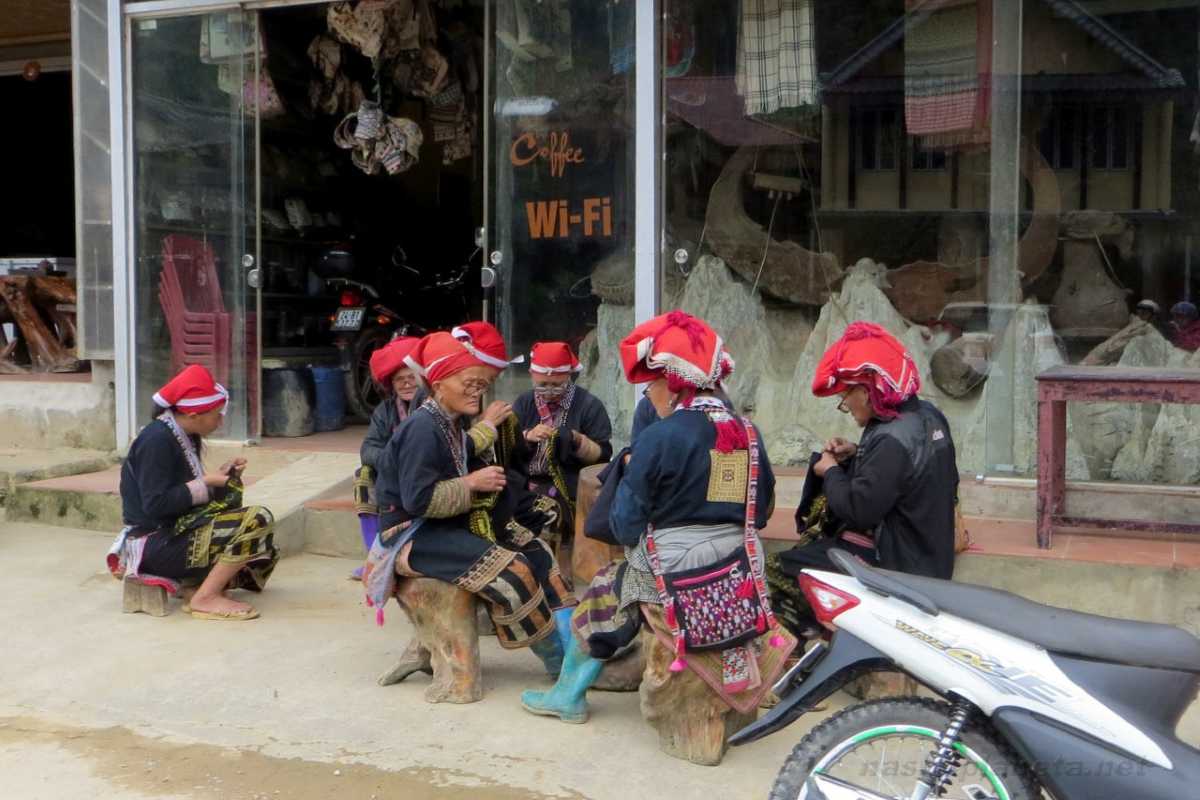
Capturing Ta Phin: Photography Tips & Best Spots
Photographing Ta Phin Village is an adventure in itself—each season, sunrise, and winding path offers something new to frame. If you want to come home with more than just snapshots, a little planning and respect for local life go a long way.
Start early, before the sun peeks over the mountains, or linger until late afternoon when the light is soft and golden. The magic hours here are brief but breathtaking—perfect for catching mist drifting through rice terraces or the first smiles of children on their way to school.
- Iconic viewpoints: Head to the upper village trails for sweeping panoramas of rice fields, or climb a small hill for a view of scattered Red Dao houses set against endless green.
- Best time for landscapes: Golden hour (just after sunrise or before sunset) bathes the terraces and mountains in warm light, creating rich contrasts and long shadows.
- Candid portraits: Capture artisans at work, elders in traditional dress, or a shared meal at a homestay. Always ask permission before photographing people—most villagers are welcoming, especially if you show curiosity and gratitude.
- Cultural moments: Look for market days, festivals, or impromptu gatherings in the fields. These events offer color, movement, and a deeper sense of the community’s rhythm.
- Everyday details: Don’t overlook the little things—a hand-dyed scarf drying in the sun, water buffalo crossing a stream, or sunlight catching on a child’s bracelet.
Respect is essential: Many locals feel honored by genuine interest but may be shy or private. A warm greeting and clear request will help you earn trust—and even spark a story worth sharing.
Looking for the best photography tour or secret viewpoints in Ta Phin Village? Asia Travel Links can recommend guides who know where and when to get those once-in-a-lifetime shots.
Aisha's Golden Hour Shots: Secrets to Stunning Rice Terrace Photos
Every traveler to Sapa dreams of capturing those iconic, emerald-green rice terraces, but simply pointing and shooting rarely does them justice. My goal in Ta Phin Village wasn't just to take photos, but to truly capture the soul of this incredible place, to tell its story through light and composition. This wasn't just about snapping pictures; it was about understanding the landscape, respecting the culture, and finding those fleeting moments that transform a good shot into a truly stunning one – a quest for the ultimate Ta Phin photography spots and the secrets to unlocking their magic.
As a passionate amateur photographer, arriving in Ta Phin Village felt like stepping into a living canvas. My camera was always ready, but I knew that truly great Sapa photography tips extended beyond technical settings. My initial expectation was to find beautiful landscapes, but I quickly realized the true artistry lay in how the light interacted with the terraces, and how the local life unfolded within them. The air was often cool and crisp, carrying the scent of damp earth and distant woodsmoke, a perfect backdrop for the visual feast.
My journey to capture the essence of Ta Phin unfolded over several days, often starting before dawn. I quickly learned that the ideal time of day for capturing the iconic rice terraces was undoubtedly during the "golden hour" – both sunrise and sunset. At sunrise, the mist often clung to the valleys, creating a mystical, ethereal quality as the first rays of sun pierced through, painting the clouds in soft pastels. The light was incredibly soft and diffused, perfect for highlighting the intricate contours of the terraces without harsh shadows. For sunset, the light turned a rich, warm gold, making the green paddies glow with an almost incandescent quality, and casting long, dramatic shadows that added depth and dimension. This is where the magic of golden hour photos truly comes alive.
I spent hours scouting different vantage points. I'd trek to higher ground, often following buffalo paths or small trails Ly, my guide, would point out. I learned that the best Ta Phin photography spots weren't always the most obvious. Sometimes, it was a bend in the path that perfectly framed a cluster of traditional homes against the backdrop of the terraces. Other times, it was a low angle, almost at ground level, that emphasized the scale and artistry of the terraced fields. I experimented with different lenses – a wide-angle for sweeping landscapes, and a telephoto for isolating details like a farmer working in the fields or a group of children playing.
My camera settings often involved a lower ISO (100-200) for clarity, a slightly narrower aperture (f/8 to f/11) to ensure sharpness across the vast landscape, and adjusting shutter speed to compensate for the light. For sunrise/sunset, I'd often underexpose slightly to preserve the vibrant colors of the sky, then bring up the shadows in post-processing. The feeling of anticipation as the light shifted, the focused intensity of composing a shot, and the sheer joy of seeing the image appear on my camera's screen were incredibly rewarding. I felt a deep sense of connection to the landscape, not just as an observer, but as someone actively interpreting its beauty. The unexpected challenge was often the shifting mist, which could obscure views in seconds, but also create incredible, fleeting opportunities for dramatic, moody shots.
My unique insight and demonstrated expertise revolve around composing shots that tell a story. It's not enough to just photograph the terraces; you need to include elements that speak to the human connection with the land. Look for farmers working, children playing, or buffalo grazing. These elements add scale, life, and narrative. When photographing people, always ask for permission first, and be prepared to offer a small token of appreciation or simply share a smile and a "Cảm ơn" (thank you). Respect is paramount. I also discovered that the textures of the village – the weathered wood of homes, the intricate patterns of Red Dao embroidery, the rough paths – offer incredible close-up opportunities that complement the grand landscapes. Don't just focus on the wide shots; zoom in on the details that capture the essence of Red Dao culture.
Actionable Practical Takeaways:
- Go for Golden Hour: Schedule your photography outings for sunrise and sunset (roughly 6-7 AM and 5-6 PM, depending on the season) for the most magical light.
- Scout Your Locations: Walk around the village and surrounding paths beforehand to find interesting angles and foreground elements.
- Look for Human Elements: Include people working, children playing, or traditional homes to add depth and narrative to your landscape shots.
- Respectful Photography: Always ask permission before photographing individuals, especially children. A smile and a gesture often work wonders.
- Protect Your Gear: The weather can be unpredictable. Carry a rain cover for your camera and lens, and keep them in a waterproof bag.
- Bring a Tripod: Essential for sharp golden hour shots, especially if you're experimenting with longer exposures.
My time capturing Ta Phin Village was a masterclass in patience, observation, and the art of seeing. It wasn't just about taking pictures; it was about immersing myself in the light, the landscape, and the lives of the people who call this beautiful place home. The resulting images are more than just photos; they are memories imbued with the very spirit of Ta Phin.
Recommendation: For any photographer, amateur or professional, Ta Phin Village offers unparalleled opportunities to capture truly stunning and evocative images. If you're looking to elevate your travel photography and create lasting visual stories, make sure to dedicate ample time to exploring its Ta Phin photography spots during the magical golden hours.
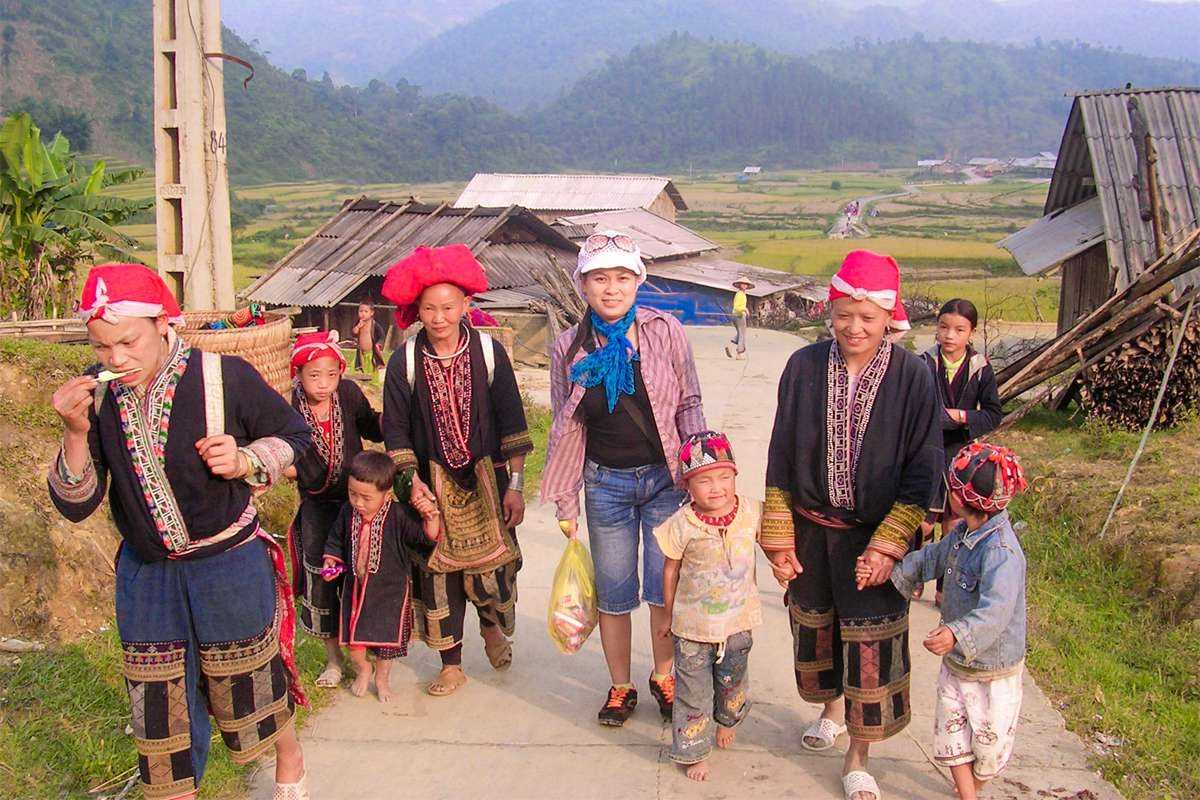
Seasonal Highlights and Village Festivals
Ta Phin Village transforms throughout the year, each season unveiling new colors, events, and experiences. Understanding the rhythm of the land and the festival calendar helps you plan the perfect trip—whether you crave tranquil landscapes, festive energy, or photogenic scenes. Use this guide to time your journey for the sights, activities, and atmosphere that matter most to you. For personalized trip planning and up-to-date festival news, Asia Travel Links is always here to help you make the most of your visit.
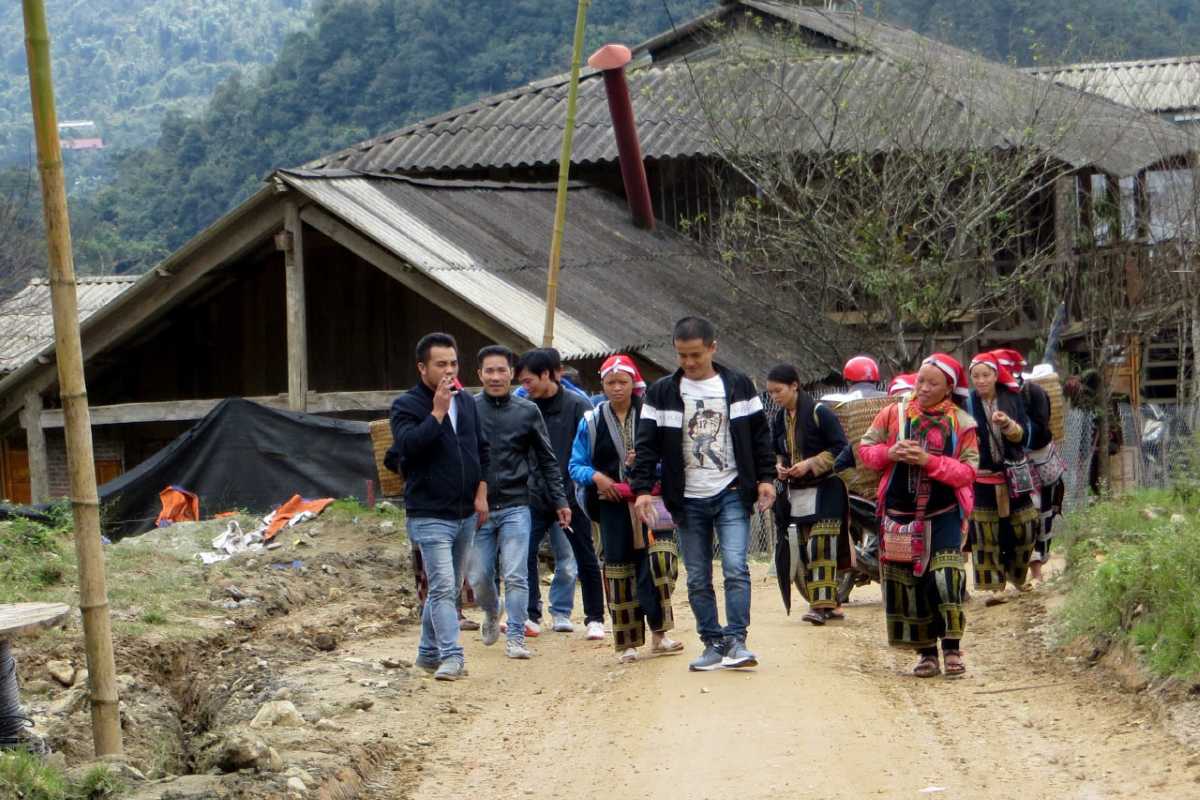
When Is the Best Time to Visit Ta Phin?
Every season in Ta Phin Village offers something special—your ideal time to visit depends on what you want to experience most.
What Each Season Offers Travelers:
Here’s what to expect in each part of the year:
- Spring (Mar–May): Blossoms burst across the hills, making it the best time for flower lovers and gentle trekking. The weather is mild, skies are clear, and local festivals may fill the air with music and color.
- Summer (Jun–Aug): The rice terraces glow in vivid green and the landscape is lush. Occasional showers bring fresh air and dramatic clouds, perfect for those who don’t mind a little rain and want to see nature at its most vibrant.
- Autumn (Sep–Nov): This is the golden season—harvest transforms the terraces to shimmering gold, skies are often clear, and it’s prime time for trekkers and photographers seeking crisp views.
- Winter (Dec–Feb): Expect cold, misty days and the rare chance to see frost or even snow. The atmosphere is quiet, peaceful, and hauntingly beautiful, with a unique, contemplative feel.
Choosing your season in Ta Phin Village shapes your experience, so think about your priorities—flowers, vibrant greenery, golden harvest, or misty winter moods.
Wondering about weather patterns or want to coincide with a festival? Contact Asia Travel Links for the latest updates and seasonal travel advice.
Rice Terrace Views and Flower Blooms:
The famous rice terraces of Ta Phin Village change dramatically through the seasons—plan your visit for the best photo ops and scenery:
- Planting season (May–June): Terraces are flooded, reflecting the sky and creating a shimmering mosaic—magical for photographers.
- Lush green (June–August): The fields are at their greenest and most vibrant, alive with growth and daily farming.
- Golden harvest (September–October): The landscape shifts to gold as rice matures, making this the most sought-after time for panoramic shots.
- Flower season (Spring): Hillsides burst with plum, peach, and wildflowers, adding splashes of color and attracting local festivals.
Each season is beautiful in its own way—choose the time that matches your dream Ta Phin Village experience.
Want insider tips on peak bloom times or the best terrace viewpoints? Asia Travel Links can craft a photo-focused itinerary just for you.
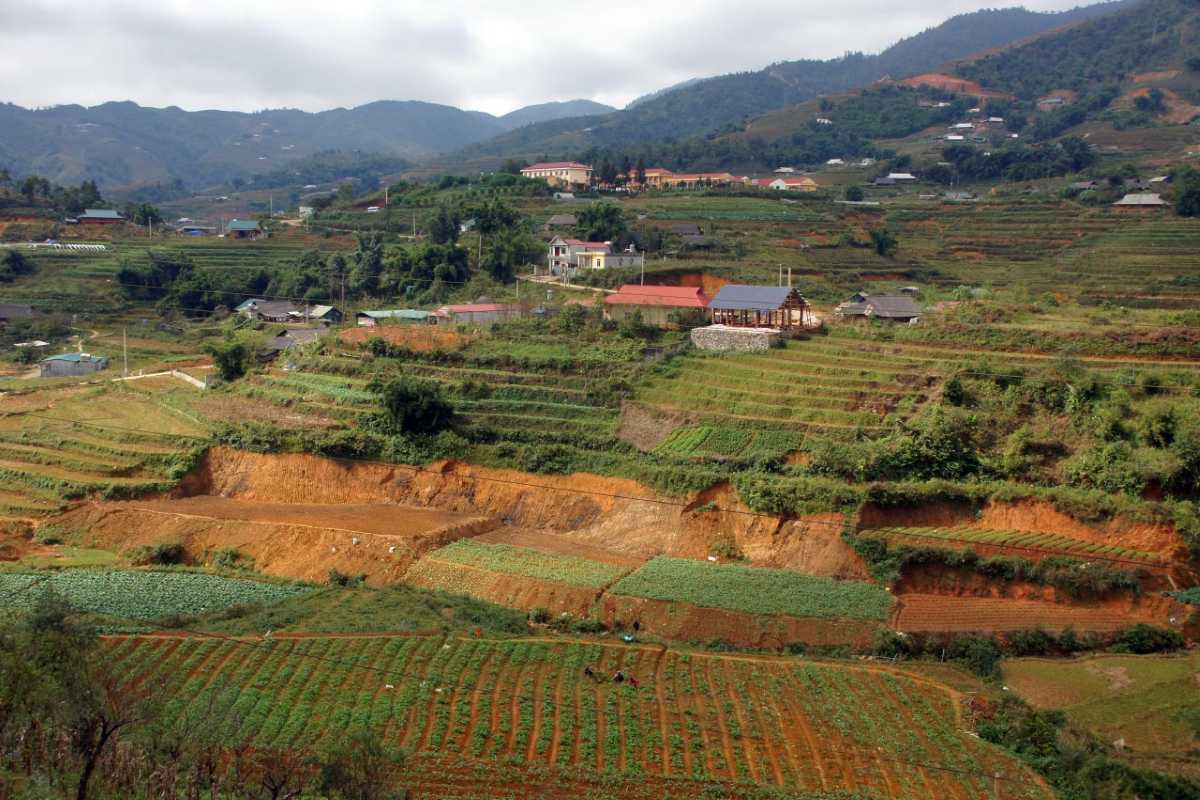
Local Festivals and Special Events
Visiting Ta Phin Village during a festival or traditional celebration unlocks a deeper side of village life, filled with color, sound, and ancient customs. These special events offer a chance to witness—and sometimes join in—rituals that shape the community’s identity year after year.
Red Dao New Year and Traditional Celebrations:
The most significant celebration in Ta Phin Village is the Red Dao New Year (Tet), typically observed around late January or February, depending on the lunar calendar.
- Rituals: Days before Tet, families prepare offerings and decorate their homes. On New Year’s Eve, elaborate ancestor ceremonies invite blessings for the year ahead.
- Music and dance: The village comes alive with traditional music, energetic dances, and the rhythmic clanging of ceremonial instruments.
- Traditional games: After rituals, the air fills with laughter as villagers compete in games unique to the Red Dao—from spinning tops to tug-of-war.
- Clothing and cuisine: This is the best time to see everyone dressed in their finest embroidered costumes and to sample special festival dishes prepared only for the holiday.
- Dates: As dates shift each year with the lunar calendar, check in advance if you want to witness or participate in Tet festivities.
Joining a festival in Ta Phin Village isn’t just about watching—it’s about sharing in the excitement, generosity, and spirit of a centuries-old celebration. For the latest festival dates and visitor etiquette, Asia Travel Links offers updated guidance and event-led itineraries.
Harvest Time Festivities and Community Gatherings:
Another vibrant season in Ta Phin Village is the autumn rice harvest, marked by celebration and togetherness.
- Community meals: As fields turn gold, villagers gather for communal meals, inviting neighbors and sometimes visitors to share in the bounty.
- Song and dance: Evenings echo with traditional Red Dao songs, drumbeats, and impromptu dances around a bonfire.
- Giving thanks: Rituals give thanks for the successful harvest and honor ancestors who guide the land’s fertility.
- Local markets: Small markets or pop-up stalls sell harvest goods, handmade crafts, and seasonal treats—perfect for visitors wanting to take home a piece of the season.
- Social spirit: These gatherings foster connection, gratitude, and a sense of belonging—visitors are welcomed warmly, provided they approach with respect and curiosity.
Visiting during a festival or harvest time ensures your Ta Phin Village experience is full of meaning, memory, and real cultural exchange. Curious about timing your visit with a special event? Asia Travel Links can help you plan for festival highlights and authentic community moments.
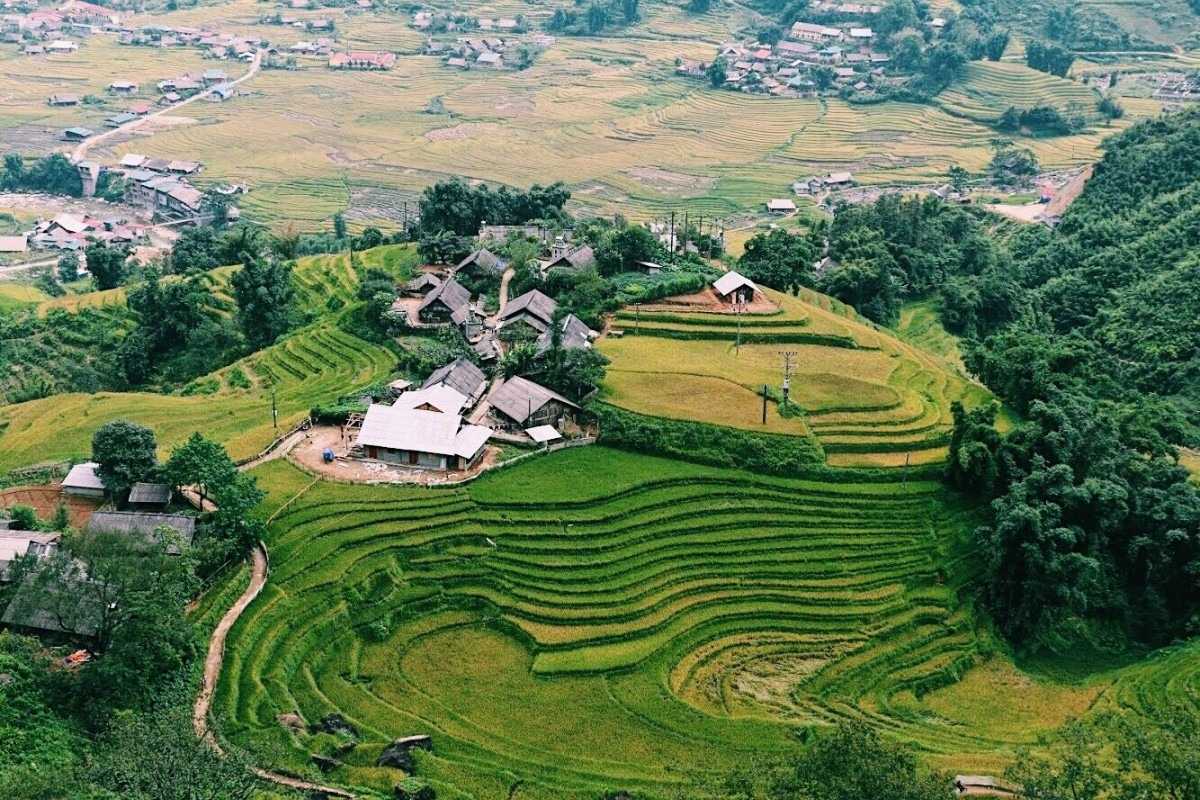
What to Expect During Your Visit
When planning a trip to Ta Phin Village, it’s important to know what you’ll encounter in terms of weather, crowds, and the overall atmosphere. Setting the right expectations ensures your experience is both enjoyable and culturally respectful.
Weather, Crowds, and Village Atmosphere:
When planning your visit to Ta Phin Village, knowing what to expect in terms of weather, crowd levels, and the daily village vibe is key to making the most of your experience. The seasons and local rhythms create a unique atmosphere every month of the year.
- Weather: Ta Phin Village enjoys cool, misty mornings and mild days in spring (March–May), ideal for outdoor activities. Summer (June–August) brings lush landscapes and occasional afternoon showers, while autumn (September–November) is famous for golden rice terraces and crisp air. Winter (December–February) is cold, sometimes foggy, with rare frosty mornings.
- Crowds: Even during peak festival seasons, the village is far less crowded than Sapa. Most of the year, you’ll find a calm, unhurried pace, perfect for those seeking peace and authenticity.
- Village Vibe: Expect a festive buzz during holidays and community events, but at other times, life in Ta Phin Village is tranquil, with locals working the fields or practicing traditional crafts. Early mornings and late afternoons are especially serene.
By understanding the seasonal flow and Ta Phin crowd levels, you can plan your journey for either lively celebrations or quiet reflection. For tailored advice on timing your visit, reach out to Asia Travel Links.
How to Join in the Festivities Respectfully:
Joining local celebrations in Ta Phin Village is a wonderful way to connect with the community, but it’s important to approach these moments with sensitivity and respect. A little cultural awareness ensures your presence is welcome and your experience is meaningful.
- Always ask before joining group activities, especially those with religious or family significance.
- Request permission before photographing people, rituals, or ceremonies—some moments are considered private.
- Dress modestly, covering shoulders and knees, to honor local expectations during festivals and in sacred spaces.
- Respect boundaries: Certain areas, like family homes or shrines, are private unless you’re specifically invited.
- Show gratitude for hospitality—thank your hosts, and consider supporting them by purchasing local handicrafts or making a small contribution.
Following these etiquette tips ensures you contribute positively to Ta Phin Village’s welcoming spirit while deepening your own cultural experience. For more advice on festival etiquette or arranging a local guide, Asia Travel Links is always ready to assist.

Where to Eat, Sleep, and Refresh in Ta Phin Village
A visit to Ta Phin Village is as much about where you rest and recharge as it is about exploring the rice terraces. Here, every stay feels authentic—whether you’re bedding down in a family-run homestay or tucking into a hearty meal of mountain-grown vegetables after a long day on the trails. The logistics of eating, sleeping, and wellness might seem simple, but these moments shape how you experience the heart of the village. Understanding your options in advance means you can focus on soaking up genuine hospitality, sharing laughter around a home kitchen, and trying ancient wellness rituals passed down through generations. For those ready to discover true local life, the right accommodation and dining choices will make your time in Ta Phin Village deeply memorable. If you ever want help sorting through these choices or booking ahead, just email us at Asia Travel Links for up-to-date tips and trusted suggestions.
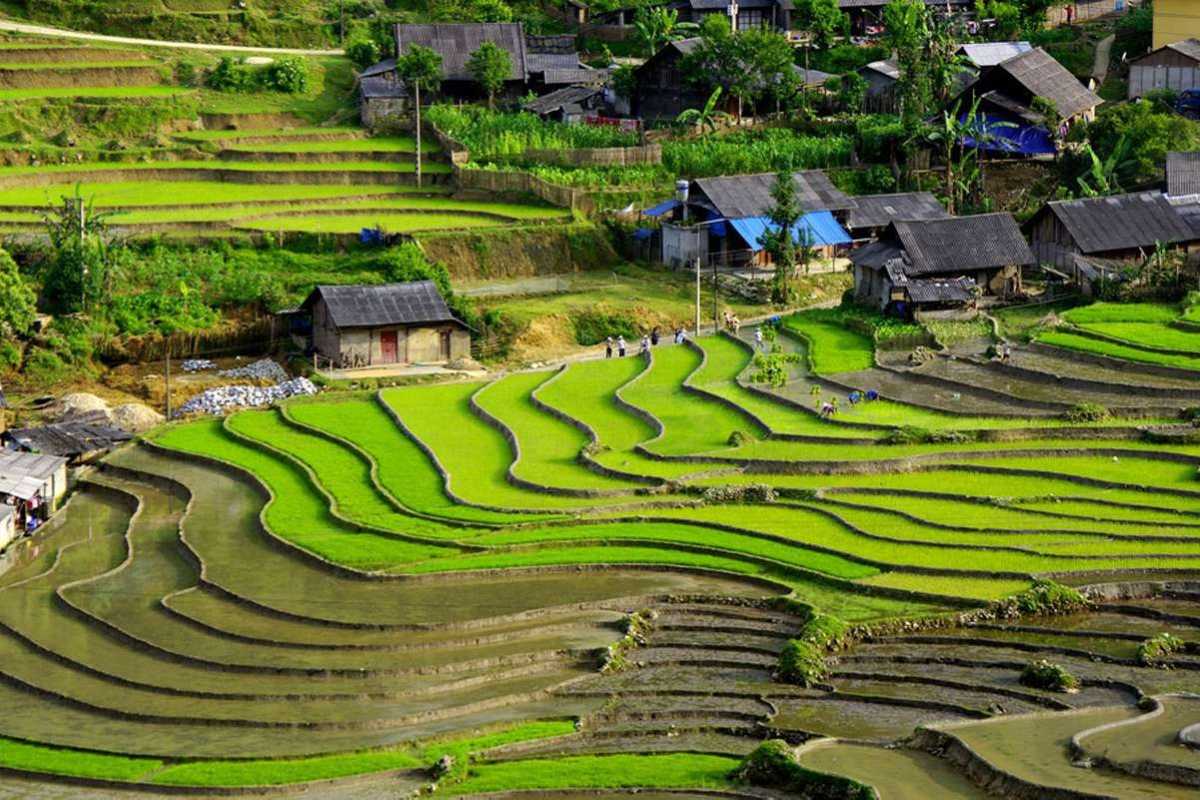
Homestays, Guesthouses, and Booking Tips
Few things compare to waking up in a hillside homestay, sunlight slipping through the wooden shutters, and the distant clatter of village life starting up outside. In Ta Phin Village, most travelers choose between a traditional homestay or a simple guesthouse. Homestays offer the deepest local connection, often run by Red Dao families who love welcoming guests into their daily rhythms. Expect to pay around 150,000–250,000 VND per night, which usually includes breakfast or even dinner by the hearth. Guesthouses, while still modest, provide a touch more privacy or upgraded facilities and typically cost 300,000–500,000 VND. If you’re traveling in high season, booking ahead is wise, but off-peak, you can usually find a place on arrival—just ask around the main road. Choosing a spot that suits your budget and comfort means you’ll get the most out of every sunrise and evening in the village. If you prefer tailored advice or want to lock in a special stay, reach out to us for personal recommendations.
Comparing Options for Different Budgets:
You’ll find accommodation for every style and wallet in Ta Phin Village. Basic homestays immerse you in family life and cost the least. Guesthouses offer more comfort for a higher price. While there are no luxury resorts, a few newer guesthouses now offer bigger beds, sweeping terrace views, or en suite bathrooms for those seeking a bit more convenience.
- Homestays: Community-based, run by Red Dao families; expect simplicity, warmth, and home cooking.
- Guesthouses: Modest upgrades, sometimes with private bathrooms and panoramic balconies.
- Premium rooms: Limited supply, best to book in advance if you want extra amenities.
The charm is in the experience, not the frills. Arrive with an open mind and you’ll likely find your favorite place is the one where you felt most welcome. Booking through Asia Travel Links ensures up-to-date info and peace of mind.
What to Expect for Comfort and Amenities:
Staying in the village means trading a few modern comforts for a richer cultural experience. Don’t expect luxury—most accommodations are clean but basic, with firm beds, thick blankets, and sometimes shared bathrooms. Hot water may be limited, especially on cold or rainy days, and electricity outages can happen. Wi-Fi is sometimes available, but it’s often slow—use it as a chance to unplug. The real amenities are the hospitality, the offer to join family meals, and the stories shared over herbal tea. As long as you arrive prepared, your stay will be comfortable, memorable, and full of heart. If you have specific needs or concerns, checking with your host in advance—or letting us know what matters most—can ensure you arrive ready for a great night’s sleep.
Ready to pick the perfect place to rest? Let Asia Travel Links help you secure a stay that matches your style and needs.
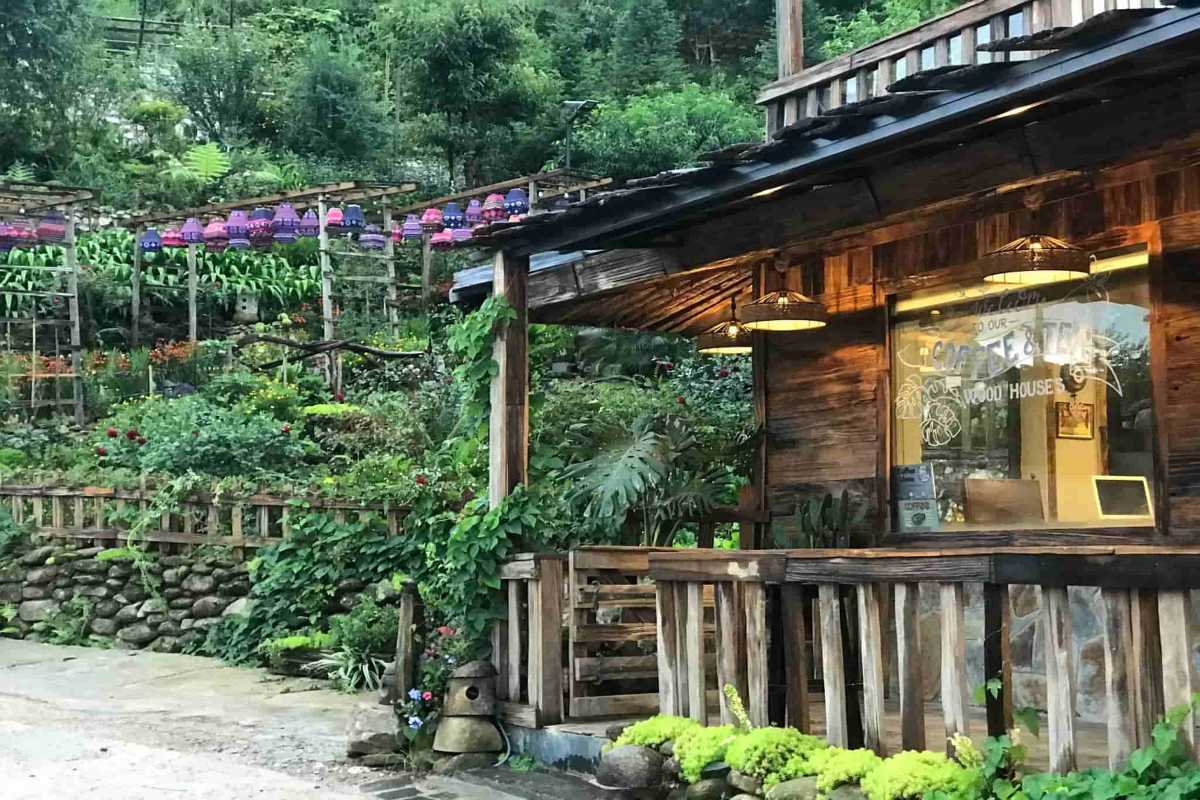
Where to Find Authentic Red Dao Cuisine
There’s no better way to connect with the heart of Ta Phin Village than through its food. Every meal tells a story of the land and the people who’ve worked it for generations. Here, you’ll discover rustic recipes and rare flavors that set the table for a truly memorable journey. From family kitchens to hidden village kitchens, the culinary traditions of the Red Dao reflect a deep respect for local ingredients and seasonal rhythms. Whether you’re an adventurous eater or simply craving comfort after a day outdoors, the best meals in Ta Phin Village are always made with care and pride. Savoring these specialties is more than a meal—it’s an invitation into the soul of the community, and a memory you’ll take home long after you’ve left the misty hills behind. Don’t be afraid to ask your host for their favorite dish, or to follow the scent of woodsmoke drifting from a neighbor’s kitchen.
Must-Try Dishes and Local Ingredients:
The traditional flavors of Ta Phin food are shaped by simple, mountain-grown ingredients and centuries-old recipes. Here are some dishes you shouldn’t miss:
- Thang Co: A robust, savory stew made with various cuts of horse or buffalo, seasoned with cardamom, lemongrass, and mountain herbs for a warming, aromatic flavor.
- Bamboo-tube rice (Com Lam): Fragrant sticky rice steamed inside bamboo tubes, absorbing the subtle taste of the wood, often served with grilled meats or spicy dipping sauces.
- Black chicken: Known for its tender, slightly gamey meat and prized for its health benefits, usually simmered with local herbs.
- Wild vegetables: Seasonal greens foraged from nearby forests, stir-fried or served in simple soups, offering a fresh, earthy taste that’s unique to the region.
- Smoked pork and homegrown chili: Common in homestay kitchens, adding deep umami and gentle heat to the meal.
What makes every dish memorable is the freshness of the ingredients and the hands that prepare them—often from the host family’s own garden or nearby fields.
Trying these must-eat specialties is an essential part of experiencing the village’s living culture. If you’re unsure where to start, just let your host know you’re eager for the house favorite, and be open to flavors you won’t find anywhere else. Savoring a home-cooked meal in Ta Phin Village is a travel memory you won’t forget—so don’t leave without trying at least one new dish.
Where Locals Recommend Eating:
Finding authentic food in the village is all about following local wisdom. Most travelers discover that the best meals are shared at their homestay, where recipes are handed down and every plate is made with pride. Don’t hesitate to join your hosts in the kitchen—you’ll often get to see the cooking process up close, and maybe even lend a hand. For a truly genuine experience, ask if you can join family dinner; this is where stories are swapped, and flavors are at their richest.
If you’d like to venture out, ask your host for recommendations on small village eateries. A few basic restaurants serve hearty bowls of noodle soup, fried rice, or local specialties, especially around the main road or near the local market. Menus are rarely posted, so a friendly question or two will lead you to something delicious and new. You’ll also find street vendors selling snacks or grilled skewers in the evening—perfect for a quick taste between treks.
Wherever you choose to dine, the guiding principle is always freshness and hospitality. Trying a meal at a homestay, accepting a cup of herbal tea from a neighbor, or sitting down for lunch in a tiny local shop means you’ll always eat well—and you’ll leave with a deeper appreciation for daily life in Ta Phin Village.
If you’re looking for help booking a homestay with unforgettable food, or just want local advice, Asia Travel Links is always happy to help guide your culinary adventure.

Rest and Recharge: Herbal Baths and Wellness
When the cool air settles over Ta Phin Village and your legs ache from a day of trekking, nothing feels better than a soak in one of the village’s famous herbal baths. Here, wellness is woven into the rhythm of daily life. The herbal bath is not just a treat for tired travelers—it’s a cherished Red Dao tradition, crafted from generations of local knowledge and the bounty of the surrounding hills. Whether you’re seeking deep relaxation, relief from muscle aches, or simply a moment of peace, these baths deliver a uniquely soothing experience found only in this quiet corner of Sapa.
Booking a Herbal Bath Experience:
Arranging a Herbal bath Ta Phin is refreshingly simple. Most travelers enjoy their first soak through a homestay: just let your host know you’d like to try the bath, and they’ll prepare it with fresh herbs picked that day. For those not staying overnight, several designated bath houses in the village offer walk-in services, often managed by local Red Dao women. You can also ask your trekking guide to arrange a session as part of your day’s itinerary.
- Homestay-organized baths: Convenient, intimate, and highly authentic—often included as part of your overnight stay or for a small extra fee (usually 120,000–180,000 VND per person).
- Village bath houses: Standalone facilities with larger wooden tubs and regular hours. Expect similar prices and a bit more formality, but still a very local touch.
- Through local guides: If trekking, your guide can phone ahead or book a bath for you at a specific house or shop.
Each bath typically lasts 20–30 minutes, with towels provided. It’s best to arrange your soak for late afternoon or evening, just as the chill settles in. Most places accept cash only, so bring enough small bills for payment and a tip if you’re pleased with the service. If you need help arranging a session, ask your homestay host or reach out to Asia Travel Links for recommendations.
Health Benefits and Local Secrets:
Behind every Ta Phin wellness ritual is centuries of traditional herbal wisdom. The Red Dao women are experts at blending more than 10–15 types of medicinal plants—collected from the hills and forests surrounding the village. These include wild basil, cinnamon leaves, camphor, ginger, and local tree bark, each chosen for its unique healing property.
- Muscle relaxation: The warm herbal blend eases tension after trekking, helping tired legs and backs recover overnight.
- Improved circulation: Steaming baths stimulate blood flow, said to aid in recovery and keep you warm in cold mountain weather.
- Skin health: Natural oils and plant extracts leave skin soft, soothed, and lightly scented with mountain herbs.
- Stress relief: The heat, scent, and tranquil setting combine to quiet the mind and melt away fatigue.
Many visitors also find the bath brings deep, restful sleep and a lingering sense of calm—a treasured secret the locals have known for generations. The Red Dao believe these wellness rituals aren’t just about physical health, but about restoring harmony between body and spirit.
Experiencing a herbal bath Ta Phin is an essential part of any village stay. If you’d like advice on finding the most authentic bath or want to book ahead, Asia Travel Links is always ready to help. Treat yourself to this rare tradition—you’ll leave feeling truly refreshed, inside and out.

Responsible Travel and Supporting the Community
The heart of a visit to Ta Phin Village lies in being a thoughtful, responsible traveler. Every decision you make—how you interact, where you spend, what you support—can shape this rural community for better or worse. By choosing mindful travel, you not only protect the authenticity of the village, but also uplift local lives and the breathtaking landscapes that make this place special. True exploration here is about connection, respect, and giving back to the people and nature that welcome you.

How Tourism Impacts Ta Phin
The arrival of visitors to Ta Phin Village brings real opportunity. Tourism helps local families supplement their incomes, sustain handicraft traditions, and create new jobs—from homestay hosts to trekking guides and artisans. Buying directly from villagers or women’s cooperatives keeps the benefits close to home, funding children’s education and preserving cultural heritage for future generations.
But tourism also brings challenges. Cultural erosion can occur as ancient customs adapt or are commercialized to meet tourist demand. Environmental strain is visible in increased litter, water usage, or over-trodden paths. In some cases, well-meaning gifts to children have encouraged begging, unintentionally creating dependency. The goal is to celebrate what’s positive while minimizing harm, so Ta Phin Village can thrive far into the future.
Positive Changes and Ongoing Challenges:
Before you arrive, it’s important to understand how your presence can be both a blessing and a burden. Here’s what tourism means for Ta Phin Village:
- Economic growth: Family incomes rise from homestays, guiding, and craft sales.
- Cultural sharing: Visitors' interest helps revive and showcase traditional Red Dao crafts, music, and food.
- Environmental stress: Waste and resource demands can outpace village capacity, especially during peak seasons.
- Social change: New money and ideas alter the rhythms of daily life—sometimes at the cost of tradition or community bonds.
By recognizing this balance, you can make your visit as positive as possible. Every choice counts—especially where you spend, what you support, and how you interact with locals.
Visitor Guidelines for Meaningful Travel:
You don’t need to be perfect—just aware and willing to learn. These steps will help you practice responsible travel Ta Phin and leave a lasting, positive impression:
- Respect local customs: Dress modestly, ask permission before photos, and be mindful in sacred or private spaces.
- Minimize your waste: Bring a reusable water bottle, carry out trash, and avoid single-use plastics.
- Support ethical businesses: Book with local homestays, buy crafts directly from makers, and dine at family-run eateries.
- Avoid giving gifts directly to children: Instead, support local schools or buy crafts from parents, ensuring help goes where it’s needed most.
- Value cultural differences: Observe, ask questions, and participate respectfully in rituals or daily life.
By following these simple guidelines, you help preserve what makes Ta Phin Village so unique. If you’re unsure where to book or how to contribute, Asia Travel Links can connect you with ethical tours, guides, and community projects that align with your values.
You have the power to ensure Ta Phin Village remains an authentic, vibrant place for generations. Choose conscious tourism, and your impact will reach far beyond your visit.

Sustainability and Conservation Efforts
Caring for Ta Phin Village means more than just visiting—it’s about supporting ongoing work to preserve its culture and nature. In recent years, villagers and outside partners have launched real, visible projects to ensure this beautiful corner of Vietnam remains special for the next generation. When you visit, your choices and participation can help protect what makes this place unique.
Local Projects Protecting Culture and Nature:
Throughout Ta Phin Village, you’ll notice both small and large efforts to protect the environment and preserve tradition. Here are some current and recent examples:
- Community-based tourism projects help local families host guests while maintaining their cultural practices and rural lifestyle.
- Women’s cooperatives teach Red Dao embroidery skills to younger generations, run artisan workshops, and create fair-wage jobs.
- Local guides organize nature walks that include lessons in plant identification and sustainable foraging—sharing knowledge and encouraging care for the land.
- Annual clean-up campaigns rally villagers and visitors to collect litter from hiking trails, rice fields, and streams, especially after festival season.
- Some homestays invest in water filters, solar panels, or composting toilets, reducing environmental impact and serving as models for the community.
Each initiative is a step toward a balanced future, blending economic opportunity with cultural and environmental protection. By learning about and supporting these projects, you contribute to the long-term well-being of Ta Phin Village.
How Travelers Can Get Involved:
If you’re inspired to help, it’s easy to support sustainable tourism Ta Phin—even during a short visit. Consider these meaningful ways to get involved:
- Choose responsible tour operators and guides who respect local culture, limit group size, and follow eco-friendly practices.
- Book workshops or homestays with village cooperatives that reinvest profits into community welfare, education, and conservation.
- Ask about current village initiatives—such as tree planting, trail maintenance, or clean-up days—and volunteer a few hours if your schedule allows.
- Donate to local cultural preservation or environmental projects, either directly or through vetted organizations suggested by Asia Travel Links.
- Respect “leave no trace” principles: pack out your waste, tread lightly on trails, and encourage others to do the same.
Even small acts—like picking up a stray plastic bottle or sharing your positive experience with others—help set a standard for future visitors.
Your mindful participation supports both the spirit and the sustainability of Ta Phin Village. Every traveler’s effort matters, ensuring the magic of this place endures for years to come.

Buying Local: Handicrafts and Fair Trade
Shopping in Ta Phin Village is about more than souvenirs—it’s a way to support local families and preserve the area’s unique culture. Many travelers are drawn to the vibrant markets and artisan stalls, where you’ll find truly distinctive items, each with a story and a purpose.
Where to Shop and What to Look For:
Every trip to Ta Phin Village offers the chance to bring home something meaningful. Here’s what to keep an eye out for, and how to shop responsibly:
- Embroidery: Intricate hand-stitched textiles are a Red Dao hallmark. Look for table runners, bags, jackets, and scarves featuring traditional motifs in red, white, and indigo. These are best purchased directly from the women who make them, either at their homes or at community-run stalls.
- Silver Jewelry: Local silversmiths create rings, bracelets, earrings, and decorative pins, often inspired by traditional patterns or cultural symbols. Shopping from a women’s cooperative or trusted artisan helps ensure authenticity and fair pricing.
- Traditional Clothing: Colorful Red Dao or Black Hmong garments and accessories—like headscarves, belts, or sashes—are both practical and symbolic, making memorable gifts or keepsakes.
- Other Handicrafts: Small woven baskets, wood carvings, and beaded ornaments can also be found, reflecting the natural materials and creative spirit of the village.
- For genuine impact, buy directly from artisans, women’s cooperatives, or market stalls where you can see the work being made. Avoid mass-produced souvenirs that may not benefit the local economy.
Shopping this way ensures your money supports the real creators and helps keep these traditions alive for future generations. For advice on where to find the most authentic options, don’t hesitate to ask your homestay host or local guide.
Supporting Women’s Cooperatives and Community Initiatives:
Backing women’s cooperatives in Ta Phin Village does much more than provide income—it helps sustain the community and empower future leaders. Here’s how your support makes a difference:
- Women’s cooperatives pay fair wages, offer job training, and ensure profits stay within the village, funding education, healthcare, and community improvements.
- These groups run workshops that teach young girls and women embroidery, business skills, and even English, creating brighter opportunities for the next generation.
- When you purchase from a cooperative, you directly empower women to become decision-makers, role models, and teachers within their families and the wider village.
- Community initiatives may also include literacy classes, environmental projects, or cultural preservation events—all strengthened by ethical shopping and visitor participation.
- Look for signs, labels, or word-of-mouth recommendations that indicate a cooperative or community project. When in doubt, ask about the story behind the item.
Conscious shopping is a powerful act—one that supports Ta Phin Village’s social fabric and helps ensure the survival of its cultural heritage. By choosing fair trade, you create a ripple effect of benefit, touching many lives in lasting ways.

Safety Considerations & Local Support
Safety in Ta Phin Village is about more than just common sense—it’s about understanding the rhythm of rural life and respecting the community’s way of being. While the area is welcoming, travelers benefit from being prepared and mindful throughout their visit.
Trekking Safety: What You Need to Know
Before heading out on trails around Ta Phin Village, set yourself up for a secure and enjoyable trek:
- Hire a Local Guide: The best way to stay safe—and deepen your cultural experience—is by walking with a local. Guides know the safest routes, can explain traditions, and will help you avoid trespassing or getting lost.
- Stay on Marked Paths: Paths can look deceptively similar. Stick to well-trodden trails and respect private fields and property.
- Inform Someone of Your Plans: Whether it’s your host, a fellow traveler, or your guide, let someone know your expected route and return time.
- Bring Essentials: Carry a map, water, snacks, and a phone (with a charged battery and local emergency numbers if possible).
- Weather Awareness: Mountain weather can shift quickly. Always check the forecast and be prepared to turn back if conditions change.
A few thoughtful steps will ensure your trek is memorable for all the right reasons.
Interacting with Locals: How to Navigate Cultural Nuances
Connecting with people in Ta Phin Village can be the highlight of your trip—if you approach interactions with sensitivity:
- Politeness Goes Far: Smile, greet locals, and use basic Vietnamese or local phrases if you know them.
- Ask Before Taking Photos: Always seek permission, especially with elders or children, to show respect.
- Respect Boundaries: Avoid touching children’s heads or stepping into someone’s home uninvited.
- Bargain Kindly: Negotiation is part of market culture, but do it with a smile and without pressure.
- Observe and Learn: Take cues from your host or guide about local etiquette, from meal customs to dress.
Openness and humility open doors to genuine, positive exchanges.
Health: Staying Well in Rural Vietnam
Being proactive about your health helps you focus on the experience:
- Water Safety: Drink only bottled or filtered water. Avoid ice if you’re unsure of its source.
- Food Hygiene: Eat at reputable homestays or eateries. Choose freshly cooked dishes over foods that have been sitting out.
- Carry Medication: Bring any personal prescriptions, plus basics like painkillers, allergy medicine, and digestive aids.
- Bug Protection: Use insect repellent and cover up at dusk and dawn to prevent bites.
- Rest and Hydration: Mountain air can be dehydrating—drink more water than you think you need and rest as needed.
Staying healthy means you can savor every moment in Ta Phin Village.
Travelers who prepare for safety and respect local customs often enjoy the richest, most trouble-free adventures. For added support, Asia Travel Links can help you find guides and provide up-to-date advice—reach out to us for assistance planning your visit or if you need any travel help on the ground.
Javier's Experience Navigating the Trails (and Staying Safe)
My trip to Sapa was always going to involve trekking, but I knew that exploring the more remote areas like Ta Phin Village would require more than just sturdy boots. This wasn't a paved path in a national park; this was genuine, untamed mountain terrain, and I wanted to be prepared. My primary concern was Ta Phin safety tips, especially when venturing off the main routes. I aimed for an authentic experience, but not at the expense of my well-being. This was about understanding Trekking safety Sapa style, where preparedness and local knowledge are paramount.
Before arriving in Ta Phin Village, I spent a good amount of time researching the local conditions. My expectations were that the trails would be unpaved and potentially challenging, especially if it rained. I packed light but purposefully: waterproof layers, a small first-aid kit, a portable charger, and plenty of water. I also made the crucial decision to hire a local guide, Ly, through my homestay. My initial feeling was a mix of excitement for the adventure and a healthy dose of caution, knowing that the mountains can be unpredictable. The air was fresh, carrying the scent of damp earth and distant woodsmoke, a reminder of the wild beauty that surrounded me.
Our trek began under a clear morning sky, the rice terraces glowing green in the early light. The path started off as a well-worn track, winding through small hamlets. However, as we ventured deeper, the trail quickly transformed. We navigated narrow, slippery sections carved into the hillside, where recent rain had turned the earth into slick mud. My boots, though sturdy, sometimes struggled for purchase, and I found myself relying on Ly's steady hand and his knowledge of where to place my feet. This was my first unexpected challenge: the terrain was far more demanding than I'd anticipated, requiring constant vigilance. I could feel the tension in my ankles as I carefully picked my way over uneven stones and exposed roots.
Then came the sudden weather change. One moment, the sun was shining; the next, a thick, cold mist rolled in, swiftly followed by a light drizzle. Visibility dropped dramatically, and the trails became even slicker. This was where Ly's expertise truly shone. He knew every twist and turn, every potential hazard, guiding me confidently through the fog. He pointed out small, almost invisible markers that only a local would recognize, ensuring we stayed on the correct path. The sound of the rain pattering on the leaves, combined with the muffled quiet of the mist, created an almost eerie, yet beautiful, atmosphere. My initial apprehension turned into deep trust and relief. I realized that attempting this independently would have been foolhardy and potentially dangerous. The feeling of being safely guided through challenging conditions, while still immersed in the wild beauty, was incredibly empowering. This demonstrated the true value of guide hiring in this rural safety context.
Beyond navigation, Ly also provided invaluable cultural insights that contributed to my safety and comfort. He taught me the polite way to greet villagers, how to respectfully decline offers to buy handicrafts, and even pointed out edible plants and those to avoid. He explained local customs, which helped me navigate social interactions smoothly and avoid any misunderstandings. This holistic approach to safety – physical and cultural – was a profound learning experience. My practical tip learned firsthand was simple: always trust your guide's judgment, especially when it comes to weather or trail conditions. They live and breathe these mountains.
Actionable Practical Takeaways:
- Always Hire a Local Guide: For trekking beyond the most popular, well-marked paths, a local guide is essential for safety, navigation, and cultural understanding. They are your best resource for risk reduction.
- Pack for All Weather: Even if the forecast is clear, carry waterproof layers (jacket and pants) and warm layers. Mountain weather changes rapidly.
- Wear Appropriate Footwear: Sturdy, waterproof hiking boots with good ankle support and excellent grip are crucial for the often muddy and uneven terrain.
- Carry a Small First-Aid Kit: Include basics like band-aids, antiseptic wipes, pain relievers, and any personal medications.
- Stay Hydrated and Energized: Bring plenty of water and high-energy snacks. There are no shops on most trails.
- Inform Someone of Your Route: Let your homestay host or a trusted contact know your planned itinerary and estimated return time.
- Practice Responsible Tourism: Respect local customs, ask permission before taking photos, and avoid giving candy/money directly to children. This contributes to overall rural safety and positive interactions.
My experience navigating the trails of Ta Phin Village was a powerful lesson in preparedness and the immense value of local knowledge. It transformed a potentially risky adventure into a deeply rewarding and safe exploration. I left with not only incredible memories but also a profound respect for the mountains and the people who call them home.
Recommendation: For any traveler planning to trek or explore independently around Ta Phin Village, I cannot stress enough the importance of prioritizing Trekking safety Sapa style. Hire a local guide, prepare thoroughly, and embrace the wisdom of those who know the land best. It will not only ensure your safety but also enrich your journey with invaluable cultural insights.

Planning Your Ta Phin Trip: Essential FAQs & Budgeting
Planning your visit to Ta Phin Village is simpler when you have all the facts at your fingertips. This section brings together the most important questions travelers ask—plus a straightforward budget breakdown—to ensure you’re financially and logistically prepared for an unforgettable journey.

How Much Does a Ta Phin Trip Cost? (Budget Breakdown)
If you’re budgeting your adventure to Ta Phin Village, here’s what you can expect for a typical visit:
Accommodation
- Homestay: $8–$15 USD per person, per night (includes meals at most family-run stays)
- Guesthouse: $15–$30 USD per night for slightly more comfort, sometimes with private bathrooms
Food
- Homestay Meals: Usually included, but extra meals cost $2–$4 USD per person
- Local Eateries: Around $2–$6 USD per dish, depending on menu and setting
Activities
- Herbal Bath: $4–$8 USD per session
- Embroidery or Cooking Workshop: $5–$15 USD per person (price varies with group size and duration)
- Trekking Guide: $15–$25 USD per group, per day (excluding tip)
Transportation
- Sapa to Ta Phin: Motorbike rental $7–$10 USD/day; taxi or private car $10–$15 USD one way
- From Hanoi: Sleeper bus to Sapa $12–$18 USD; train to Lao Cai $20–$35 USD (soft sleeper), then local van/bus $2–$5 USD to Sapa
- Local transfer from Sapa: $2–$5 USD by xe om (motorbike taxi)
Miscellaneous
- Souvenirs (handicrafts, textiles): $4–$20 USD, depending on item and bargaining
- Tips: Not mandatory, but $1–$2 USD per service is appreciated
- Extras: Snacks, bottled water, or festival entry fees (rare; usually under $1–$2 USD if any)
Total budget per day in Ta Phin Village can range from $25 to $60 USD, depending on your comfort, activity level, and shopping choices.
Bringing enough cash is essential—there are no ATMs in Ta Phin Village, and credit cards are not accepted. For up-to-date rates, booking support, or customized tour planning, you can always reach out to Asia Travel Links for direct advice.
Ready to take the next step? Let us help you tailor your visit for the best possible experience and value.
Robert's Last-Minute Homestay Hunt (and What He Learned)
My travel philosophy often leans towards spontaneity – arriving in a new place and letting the adventure unfold. This approach usually works well in bustling cities, but my recent trip to Ta Phin Village taught me a valuable lesson about applying that same free-spiritedness to more remote, culturally focused destinations. I was looking for an authentic homestay experience, hoping to find one on arrival to truly immerse myself. What I discovered was the stark reality of Ta Phin budget travel and the unexpected challenges of a last-minute homestay hunt, impacting my Ta Phin trip cost and plans in ways I hadn't anticipated.
Arriving in Ta Phin Village after a beautiful but tiring trek from Sapa, my initial feeling was one of exhilaration. The village was even more charming than I'd imagined – quiet, surrounded by lush rice paddies, and filled with the gentle hum of daily life. My expectation was that I'd easily find a homestay by simply walking around and asking. I had a rough idea of the Ta Phin trip cost I wanted to stick to, and assumed I'd find something affordable on the spot. The air was fresh, carrying the scent of damp earth and distant cooking fires, and I was eager to settle in.
My "hunt" began with a confident stride, but quickly turned into a more frantic search. I approached several traditional homes with "Homestay" signs, only to be met with polite apologies – "Full," "No room." It was peak season, and while Ta Phin is less commercial than Sapa town, its homestays are limited and popular. The sun was setting, casting long shadows, and the temperature was beginning to drop. The initial excitement of spontaneity began to morph into a growing unease. I walked further, my backpack suddenly feeling heavier with each passing minute. I tried a guesthouse, hoping for a fallback, but it too was fully booked. The reality of potential availability issues hit me hard.
I started to feel the impact on my travel expenses. With fewer options, the prices for the remaining available rooms (which were now very few) were higher than I had budgeted for. I also found myself spending more on motorbike taxis to ferry me between potential homestays, adding to the unexpected costs. The biggest impact, however, was on my plans. Instead of settling in and immediately immersing myself in the village, I spent precious evening hours searching for a bed, feeling stressed and unable to truly relax. The joy of the spontaneous arrival was replaced by the anxiety of not having a place to sleep. My stomach grumbled, and the thought of finding dinner became secondary to finding shelter.
Eventually, I found a small homestay, slightly further out than I'd intended, but available. It was clean and the family was welcoming, but the experience of finding it had definitely taken a toll on my initial enthusiasm and added an unforeseen chunk to my Ta Phin trip cost. My unique insight from this experience, and the clear takeaway lesson, is this: while spontaneity has its charms, for destinations like Ta Phin Village with limited accommodation options, especially during peak travel times or festivals, booking in advance is absolutely crucial. It not only guarantees you a place but also allows you to choose an option that truly fits your budget and preferences, rather than settling for whatever is left. This demonstrated a key piece of expertise in accommodation costs and booking tips for rural travel.
Actionable Practical Takeaways:
- Book Homestays in Advance: Especially during peak season (Sept-Nov, Dec-Feb) or around Vietnamese holidays/festivals. Use platforms like Booking.com or contact homestays directly.
- Confirm Availability: Even if you call, get a confirmation email or message.
- Understand What's Included: Clarify if meals (breakfast, dinner) are included in the homestay price to better manage your travel expenses.
- Check Location: Ensure the homestay's location aligns with your activity plans (e.g., close to trekking routes, village center).
- Have a Backup Plan: Know the contact details of a few alternative homestays or guesthouses in case your first choice falls through.
- Consider a Tour Package: If you prefer everything arranged, a tour package often includes pre-booked accommodation, simplifying your trip.
My last-minute homestay hunt in Ta Phin Village was a humbling experience, but one that provided invaluable lessons. While I eventually found a comfortable place, the stress and added expense could have been easily avoided. For a truly relaxed and immersive experience in this beautiful village, plan your accommodation ahead of time.
Recommendation: To ensure a smooth and enjoyable visit to Ta Phin Village and avoid unnecessary stress or unexpected increases in your Ta Phin trip cost, I strongly recommend booking your homestay or guesthouse well in advance, particularly if you're traveling during popular seasons. Don't let a last-minute homestay hunt detract from the magic of this unique destination!

Best Time to Book Your Ta Phin Homestay & Activities
Timing your reservations is key for a seamless experience in Ta Phin Village. For the best choice of homestays and activities, it’s wise to plan ahead—especially during peak periods.
- Peak Season & Festivals: Book your Ta Phin homestay and activities at least 2–4 weeks in advance for travel during the rice harvest (September–October), Tet (Lunar New Year), or national holidays. Many homestays fill quickly, and activities like herbal baths or workshops may have limited daily capacity.
- Shoulder Seasons: If visiting in spring (March–May) or late autumn (November), a lead time of 1–2 weeks usually secures your spot. Flexibility with dates or room types can help you snag a great deal.
- Off-Peak & Weekdays: Last-minute bookings are possible outside major events, but it’s still smart to call or message ahead—especially if you have dietary needs or want to join a specific workshop.
- Book Direct When Possible: Contact your preferred homestay directly or through a trusted platform for the best rates. For group activities, coordinate in advance to avoid disappointment, particularly for Ta Phin activities booking (like group trekking or cultural workshops).
- Stay Flexible: If your travel dates are fixed, secure accommodation first, then add experiences. If your plans are open, ask hosts about quieter days or bundle deals.
Planning your Ta Phin Village stay ahead of time ensures peace of mind and the widest choice of authentic experiences. Ready to reserve your place? Reach out to your chosen host—or let us at Asia Travel Links help secure your booking.

Essential Things to Know Before You Go (Quick Tips)
Before heading to Ta Phin Village, keep these essentials in mind for a smoother, stress-free journey:
- Cash & Currency: Bring enough Vietnamese dong for your stay—there are no ATMs in Ta Phin Village. Withdraw cash in Sapa or before departing Hanoi or Lao Cai. Some homestays and shops may accept mobile payments, but always check in advance.
- Connectivity: Mobile signal is generally good in and around the village, but Wi-Fi speeds can vary. Download maps and important info ahead of time in case of patchy service.
- Basic Language: Learn simple Vietnamese greetings (“xin chao” for hello, “cam on” for thank you). Locals appreciate the effort and it goes a long way in daily interactions.
- Local Vendors: Practice polite refusals when approached by sellers, especially children. Bargaining is common at markets, but always remain respectful and friendly.
- Insurance & Safety: Travel insurance is highly recommended—medical facilities are limited and rural adventures can bring unexpected surprises. Pack a basic first-aid kit for minor scrapes or insect bites.
With these Ta Phin travel tips, you’ll be well-prepared for every aspect of your adventure. A little planning now leads to a worry-free, memorable village experience. If you need help with logistics or bookings, don’t hesitate to reach out to Asia Travel Links for friendly advice.

Beyond Ta Phin Village: Nearby Attractions & Day Trips
The story of your journey doesn’t end when you leave Ta Phin Village. The Sapa region is packed with nearby highlights—each offering its own blend of culture, scenery, and adventure. With a bit of planning, you can expand your experience, connect with more communities, and fill your days with memorable sights.
Make the most of your trip by venturing beyond the village, weaving together day trips and short excursions that showcase the best of northern Vietnam’s mountain highlands. Whether you crave epic viewpoints, lively markets, or peaceful valleys, there’s plenty to explore just a short ride away. Start sketching out your expanded Sapa itinerary below, and let each destination add a fresh perspective to your adventure.
With so much to see and do, you’re just a decision away from the next unforgettable stop. Need help planning? Reach out to Asia Travel Links for advice and booking support.

Combining Ta Phin with Sapa Town & Other Villages
You can easily combine Ta Phin Village with a visit to Sapa Town and other picturesque villages for a richer, more varied itinerary. Each destination has its own character and offers unique reasons to visit, whether you’re seeking convenience, culture, or more trekking opportunities.
- Sapa Town: The region’s main hub, Sapa Town, is where you’ll find a wider range of amenities—think restaurants, cafes, bustling markets, and a lively evening scene. It’s the best place to stock up on supplies or indulge in a bit of comfort before heading deeper into the countryside.
- Cat Cat Village: Just outside Sapa Town, Cat Cat Village is famous for its accessibility and tourist-friendly layout. You’ll find photogenic waterwheels and traditional craft shops, but it’s more commercialized and crowded compared to the tranquility of Ta Phin Village. Consider Cat Cat if you want easy access and structured sightseeing; choose Ta Phin for authenticity and peaceful surroundings.
- Lao Chai & Ta Van: If trekking is your passion, include the Lao Chai Ta Van trek. These valleys offer stunning rice terraces and vibrant Hmong and Giay communities. The trails are longer and the cultural mix is different—perfect for active travelers who want to immerse themselves in rural life.
Combining these destinations lets you tailor your trip to match your interests—whether it’s food, trekking, crafts, or just soaking up the highland atmosphere. Each stop brings a new dimension to your journey, ensuring your time in Sapa is as broad and fulfilling as possible.
When mapping out your itinerary, balance time for relaxation with your thirst for discovery. Asia Travel Links can help you stitch together the perfect route so you don’t miss a thing.

Must-Visit Spots Within a Day's Reach
Beyond the quiet lanes and terraced hills of Ta Phin Village, northern Vietnam unfolds a tapestry of must-see attractions—each easily reachable within a day. These highlights bring you face-to-face with Sapa’s grandeur, history, and legendary landscapes, making your adventure even more complete.
- Fansipan Peak: Rising above the clouds, Fansipan is Vietnam’s highest mountain—often called the “Roof of Indochina.” The modern cable car whisks you from the Muong Hoa Valley floor to the summit in just 15 minutes. Along the ride, soak up panoramic views of forested valleys and jagged peaks. At the top, wander the temple complex and take in vistas that stretch all the way to the Chinese border on clear days. Fansipan is a bucket-list experience for anyone visiting the region.
- Silver Waterfall (Thac Bac) & Love Waterfall: West of Sapa, these two iconic waterfalls are quick to reach by taxi, motorbike, or guided tour. Silver Waterfall dazzles with its thunderous 200-meter drop and misty spray—a dramatic photo spot, especially after rain. A little farther, Love Waterfall rewards those who walk the short forest trail with a tranquil, romantic scene, where legend and nature intertwine. Both are perfect for a mid-day escape, a picnic, or a dose of fresh mountain air.
- Heaven's Gate (Tram Ton Pass): A winding road leads you to Tram Ton Pass, nicknamed Heaven’s Gate for its jaw-dropping views. It’s the highest mountain pass in Vietnam, and on a clear day, you’ll see both lush valleys and distant blue peaks. Bring your camera—this is where the wind, clouds, and sunlight shape the landscape into an ever-changing work of art.
- Sapa Stone Church: Back in Sapa Town, the Sapa Stone Church stands as a French colonial landmark and gathering place. Built in the early 20th century, its Gothic architecture and lively square offer a glimpse into the area’s history and daily rhythms. Swing by on a weekend to catch local festivities or the colorful Sapa Love Market.
With each destination, you’ll discover a new side of the Sapa region—whether you crave adventure, history, or the simple joy of a breathtaking view. All these spots are easily arranged as day trips from Ta Phin Village, giving you endless ways to round out your stay.
For seamless day trip planning, itinerary advice, or to book a guided tour, contact Asia Travel Links—we’ll help you make every moment count.
Chloe's Unexpected Discovery at the Silver Waterfall
My time in Ta Phin Village was a deep dive into cultural immersion and tranquil village life, a deliberate escape from the more touristy parts of Sapa. But even in the quietude, a small part of me yearned for a touch of dramatic natural beauty. I'd heard whispers of Sapa nearby attractions, including the famous Silver Waterfall Sapa, but I expected it to be just another scenic stop. What I discovered, however, was an unexpected symphony of power and majesty that perfectly complemented the serene charm of Ta Phin, adding an exhilarating dimension to my Day trips from Sapa.
Leaving the peaceful embrace of Ta Phin, the air felt a little crisper as we ascended towards the higher elevations. My expectations for the Silver Waterfall (Thac Bac) were modest – a pretty cascade, perhaps a nice photo op. I'd seen many waterfalls before. However, as we approached, a low, resonant roar began to fill the air, growing steadily louder. This wasn't just a trickle; this was a force of nature. The anticipation built with every turn in the road, and a thrill of genuine excitement began to bubble up inside me.
Stepping out of the car, the sheer power of the waterfall hit me instantly. It wasn't just a sound; it was a vibration that resonated through the ground and up into my chest. The air was thick with fine mist, carrying the clean, invigorating smell of fresh water and damp earth. Towering above, the Silver Waterfall plunged down from a dizzying height, a magnificent white ribbon against the lush green mountainside. The water crashed onto the rocks below with an incredible force, sending up plumes of spray that caught the sunlight, creating fleeting rainbows. My initial feeling was one of utter awe, quickly followed by a sense of being wonderfully insignificant in the face of such natural grandeur.
A series of well-maintained, but steep, stone steps led up alongside the cascade. With each step upward, the roar intensified, and the mist became heavier, clinging to my clothes and hair. I could feel the cool spray on my face, a refreshing sensation after the climb. This wasn't just a passive viewing; it was an immersive sensory experience. The sound was deafening yet strangely calming, a constant white noise that drowned out all other thoughts. I found a perfect unique photo opportunity on one of the viewing platforms, where the entire cascade stretched out before me, framed by verdant foliage. I experimented with longer exposures to capture the silky flow of the water, and the results were mesmerizing.
What made this particularly memorable was how it contrasted with, yet perfectly complemented, my Ta Phin Village experience. Ta Phin was about quiet cultural immersion, gentle rhythms, and human connection. The Silver Waterfall was raw, untamed nature, a powerful reminder of the dramatic landscapes that define the Sapa region. It was the perfect counterpoint, adding a thrilling, awe-inspiring element to my trip. It demonstrated that Sapa offers a spectrum of experiences, from the serene to the spectacular. My unique insight was realizing that these contrasting elements, when combined, create a truly holistic and unforgettable journey. The expertise I gained was in understanding how to appreciate both the subtle beauty of village life and the overt majesty of nature within the same trip.
Actionable Practical Takeaways:
- Combine with Other Sites: The Silver Waterfall is often visited alongside Love Waterfall and Heaven's Gate (Tram Ton Pass), which are all along the same scenic road. This makes for an efficient and visually stunning half-day trip.
- Wear Waterproofs: Even on a sunny day, the mist from the waterfall can soak you. A light rain jacket is highly recommended.
- Sturdy Footwear: The steps can be slippery, especially near the top. Wear shoes with good grip.
- Protect Your Camera: The mist can get everywhere. Use a rain cover or keep your camera in a waterproof bag when not actively shooting.
- Go Early or Late: To avoid crowds and get the best light for photos, aim to visit early in the morning or later in the afternoon.
- Don't Rush: Take your time climbing the steps and soaking in the views from different vantage points.
My unexpected discovery at the Silver Waterfall was a powerful reminder of nature's grandeur and how it can perfectly enhance a cultural journey. It was the exhilarating crescendo to the peaceful symphony of Ta Phin Village, leaving me with a profound appreciation for the diverse beauty of the Sapa region sightseeing.
Recommendation: If you're planning a trip to Ta Phin Village and looking to add an element of dramatic natural beauty, I highly recommend including a visit to the Silver Waterfall. It's an awe-inspiring experience that perfectly complements the tranquility of village life, making for an unforgettable day trip from Sapa.

Tips from Fellow Travelers and Insider Advice
A trip to Ta Phin Village always leaves a mark, but the most rewarding journeys are often shaped by the tips and experiences of those who’ve gone before you. Travelers who have wandered the winding paths, joined village homestays, or learned the rhythm of the land offer a wealth of advice. Their collective wisdom is your shortcut to a smoother, more authentic experience—ensuring you feel prepared, comfortable, and connected as you explore.

Packing and Preparation Recommendations
Packing for Ta Phin Village means planning for changeable weather, simple amenities, and daily life far from city routines. The right gear makes all the difference, and learning from other travelers’ stories will help you pack like a pro.
Essentials for Every Season:
The climate in Sapa’s highlands can swing from balmy afternoons to chilly nights—even in summer. Here’s what seasoned travelers recommend packing, with tweaks for each season:
- Layered Clothing: Bring lightweight shirts, a warm fleece, and a rainproof jacket—layers are key for changing conditions.
- Comfortable Footwear: Sturdy, waterproof shoes or hiking boots for village walks and treks.
- Winter Warmers: In December to February, pack thermal underwear, gloves, a hat, and a thick scarf—mornings can be frosty.
- Summer Must-Haves: Breathable clothes, sunhat, and quick-dry items for June through August’s warmth and showers.
- Rain Gear: A compact umbrella or poncho, especially from May to September when rains are frequent.
- Other Essentials: Insect repellent, sunscreen, a reusable water bottle, power bank, and a basic first-aid kit.
Smart packing not only saves you discomfort but lets you focus on the beauty and culture all around you. Take a moment to review your list before leaving for Ta Phin Village—you’ll thank yourself later.
Be sure to double-check the forecast and fine-tune your bag with these Ta Phin packing tips—and if you have questions, just ask us at Asia Travel Links for the latest advice.
What Travelers Wish They Knew Before Visiting:
Many visitors reflect on their first trip to Ta Phin Village and realize what would have made their journey even smoother. Here’s what they wish they’d known:
- “Bring More Cash Than You Think”: There are no ATMs in the village—only in Sapa town. Extra cash covers meals, souvenirs, and tips.
- “Book Homestays in Advance During Festivals”: Rooms fill up quickly at peak times, so reserve early to avoid disappointment.
- “The Evenings Get Chilly—Even in Summer”: Pack a warm jacket, no matter the month.
- “Practice Basic Vietnamese Phrases”: Simple greetings and thank-yous go a long way in building local connections.
- “Be Ready for Limited Connectivity”: Wi-Fi is patchy and mobile signal weak—download maps or travel info beforehand.
- “Respectful Curiosity Opens Doors”: Approach daily life with humility, ask before taking photos, and greet villagers with a smile.
Travelers’ hindsight is your foresight. Take these Sapa travel tips to heart for a stress-free and memorable stay in Ta Phin Village.
If you’d like more personal recommendations, contact Asia Travel Links—we’re always happy to connect you with the latest insights from recent visitors.

Safety and Comfort in the Village
Traveling to Ta Phin Village is safe and rewarding with just a bit of preparation and awareness. Staying healthy and navigating cultural nuances is straightforward when you know what to look out for and how to respond.
Health Tips and Staying Well:
Protecting your well-being in rural northern Vietnam means staying alert to a few basics—especially around food, water, and weather.
- Eat Fresh, Cooked Food: Stick to freshly cooked meals at homestays or local eateries. Avoid raw greens and unpeeled fruit if you’re sensitive.
- Drink Bottled or Boiled Water: Tap water is not potable. Always use sealed bottled water or boil it first.
- Prevent Insect Bites: Bring and use insect repellent, wear long sleeves in the evenings, and check your room for mosquitoes before sleeping.
- Pack Basic Medications: Carry remedies for common stomach upsets, headaches, and allergies—local pharmacies may not have what you need.
- Sun Protection: Even on cloudy days, UV can be intense. Bring sunscreen, sunglasses, and a hat.
Good health lets you immerse fully in the sights, flavors, and pace of Ta Phin Village. Make these simple steps a habit and you’ll stay comfortable throughout your visit.
Before your trip, check in with your doctor for any extra recommendations—and if you want more health safety advice tailored to Ta Phin Village, Asia Travel Links is always ready to help.
Navigating Language Barriers and Local Etiquette:
Connecting with locals in Ta Phin Village doesn’t require fluency, but a little effort goes a long way. Respectful communication and a few etiquette basics will help you build trust and make genuine connections.
- Learn Key Phrases: Simple Vietnamese greetings (hello, thank you, goodbye) show respect and are always appreciated.
- Translation Apps and Phrasebooks: Download a translation app or carry a pocket phrasebook—offline versions work best in rural areas.
- Body Language: Smile, nod, and use gestures to clarify meaning. Most villagers respond warmly to positive, open communication.
- Cultural Etiquette: Dress modestly, always ask before taking photos, and avoid touching anyone’s head (a sensitive area in Vietnamese culture).
- Gift-Giving: If you wish to show appreciation, small, practical gifts (school supplies, household items) are better received than cash or sweets.
A little preparation makes your stay smoother and helps you avoid unintentional faux pas. Keep these Ta Phin language tips and etiquette rules in mind and you’ll feel welcomed throughout your stay.
If you have special questions or want to connect with a bilingual guide, reach out to Asia Travel Links—we’re happy to smooth the way.

Making the Most of Your Time in Ta Phin Village
To truly savor the spirit of Ta Phin Village, a thoughtful itinerary and an openness to hidden corners will make every visit feel tailor-made. Whether you’re coming for a day or lingering overnight, planning ahead allows you to soak up culture, nature, and local rhythm without missing the unexpected.
Suggested Itineraries for Day Trips or Overnight Stays:
Make your trip count by following a plan that matches your pace, interests, and curiosity.
- Day Trip:
- Start early from Sapa for a scenic drive or trek to Ta Phin Village.
- Join a Red Dao embroidery workshop or cooking class for hands-on cultural immersion.
- Take a short guided walk through the rice terraces and village lanes.
- Enjoy a fresh local meal at a homestay before heading back to Sapa in the afternoon.
- 1-Night Stay:
- Arrive before lunch and settle into a welcoming Red Dao homestay.
- Spend the afternoon exploring village life or joining a workshop.
- Savor a traditional herbal bath in the evening, followed by a homemade dinner and stories with your hosts.
- Wake up to misty mountain views and a hearty breakfast before departing.
- 2-Night Stay:
- Day one: Dive into village crafts or cooking, then relax with a herbal bath.
- Day two: Embark on a longer trek into the hills or neighboring villages, guided by a local.
- Pause often for photos, snacks, and impromptu conversations with farmers or schoolchildren.
- Use the final morning for a quiet stroll, market browsing, or journaling in a peaceful spot.
Flexible plans let you add or skip experiences according to your mood, while each activity opens another layer of village life. Want more personalized Ta Phin itinerary ideas? Asia Travel Links can help tailor your journey for an even deeper connection.
Hidden Corners and Underrated Experiences:
The charm of Ta Phin Village goes far beyond what’s written in most guides. Some of the most rewarding moments happen in quiet, overlooked corners.
- Quiet Spots to Watch Village Life: Find a shaded bench or low stone wall where you can observe the gentle rhythms of daily life—children walking home from school, women embroidering, elders chatting under eaves.
- Seasonal Agricultural Activities: Time your visit to catch rice planting or harvest, when fields buzz with communal energy. Ask your host if you can join or just watch—it’s a window into village teamwork.
- Village Market Days: If your trip aligns, don’t miss the lively, sensory-rich morning market. It’s a chance to taste new foods, see local produce, and watch the village’s social heart in action.
- Exploring Small Paths: Wander down narrow alleys and terraced edges—sometimes you’ll stumble upon a hidden garden, a family altar, or a photogenic view you won’t find on any map.
- Visiting at Dawn or Dusk: The soft light transforms the landscape, and the village is at its quietest and most magical.
Let your curiosity lead and you’ll uncover the Ta Phin hidden gems that linger in memory long after you’ve left. Looking for more local insights or unique experiences? Ask your homestay host or email Asia Travel Links for custom recommendations.

Why You’ll Love Ta Phin Village!
A journey to Ta Phin Village isn’t just another stop on the Sapa trail—it’s an experience that lingers in your memory, defined by genuine connections, vibrant culture, and moments of peace far from the crowds. Whether you come searching for adventure or simply to slow down, the spirit of the village leaves a lasting mark on every traveler. Its beauty lies in the little things: the warmth of a shared meal, the laughter that floats over the terraced hills, and the feeling of belonging, if only for a day.
Let yourself be drawn into the story of Ta Phin Village, and you’ll understand why so many visitors leave with new friends, unforgettable memories, and a fresh perspective on community and culture. If you’re ready to create your own chapter, you’ll find all the support you need from Asia Travel Links to make your trip seamless, meaningful, and personal.
Book your stay, find a local guide, or simply reach out for advice—your adventure in Ta Phin Village starts with just one step.

Unique Moments That Make Ta Phin Village Unforgettable
What truly sets Ta Phin Village apart are the moments you can’t find anywhere else—moments of joy, reflection, and discovery that stay with you long after you leave.
Personal Stories and Guest Highlights:
As you wander the quiet lanes and share tea with a Red Dao host, you realize how easy it is to feel at home in Ta Phin Village. Many travelers recount the comfort of waking up to mountain mist and the sounds of village life—an experience that’s both grounding and uplifting. Others remember the deep sense of connection during a herbal bath, or the way laughter and language barriers melted away while learning embroidery or sharing a meal.
- The joy of helping with a rice harvest, side by side with local families, and understanding the rhythms of rural life.
- The inspiration found in listening to elders tell stories of old Sapa, and in the smiles of children eager to practice a few English words.
- The pride of mastering a new craft, whether weaving or cooking, and bringing a handmade keepsake or recipe home.
- The awe of standing on a hill at sunset, with nothing but golden light and quiet for company, feeling part of something bigger.
- The gratitude that comes from discovering a culture so open and willing to share, reminding you of the kindness found in small, everyday moments.
For so many, these Ta Phin travel stories are more than travel highlights—they are touchstones that change how we see the world. Every guest becomes part of the story, and every story becomes part of the village’s living memory.
Ready to make your own unforgettable experiences? Your next adventure awaits in Ta Phin Village—start planning today with a trusted local expert, or simply reach out to Asia Travel Links for guidance and support. Share your journey, connect with new friends, and leave with memories that will last a lifetime.

Connect, Share, and Plan Your Adventure
Your journey through Ta Phin Village is more than a personal experience—it’s an opportunity to inspire others, connect with fellow travelers, and help future guests enjoy the same sense of discovery and belonging. After exploring the terraced fields, savoring Red Dao hospitality, and collecting meaningful memories, you’ll find there’s even more to gain by sharing your story with the world.
How to Share Your Ta Phin Experience:
Reflect for a moment on what stood out to you in Ta Phin Village—the friendships, the flavors, the quiet mornings, or maybe the lessons learned from a local guide. Sharing your highlights and practical tips helps others travel smarter and with greater respect for this special place.
- Capture the moments that moved you most: a mountain sunrise, a family meal, a spontaneous village walk.
- Post your favorite photos and stories on social media, using tags or location markers so fellow travelers can find inspiration.
- Leave detailed, honest reviews on travel platforms, listing both your must-try experiences and helpful advice for future guests.
- Join online communities or travel groups and answer questions about Ta Phin Village or share a recommendation for a standout local guide or homestay.
- Encourage respectful, mindful travel by sharing what you learned about customs, sustainability, and the unique rhythms of village life.
Every story you share enriches the growing community of travelers who seek genuine connection and authentic discovery in northern Vietnam.
Ready to create memories others will want to follow? Book your Ta Phin homestay now or connect with a local guide Ta Phin for a truly personal experience. If you need advice or want to plan the perfect itinerary, reach out to Asia Travel Links—we’re here to help every step of the way. Share your adventure, inspire others, and start planning the journey you’ve been dreaming of.
Nhật Hoàng
Faqs
Ta Phin Village in Sapa is famous for its authentic cultural experiences, scenic landscapes, and the unique traditions of the Red Dao and Black Hmong people. It offers visitors a genuine look into rural Vietnamese life.
Travelers visit Ta Phin Village for its peaceful valley setting, vibrant traditional clothing, herbal bath rituals, and opportunities to join embroidery workshops or homestays. The village’s slower pace and welcoming locals set it apart from busier spots in Sapa.
Enjoy the tranquility and immerse yourself in cultural discovery on your next visit to Ta Phin Village.
Getting to Ta Phin Village from Sapa town is straightforward, with several convenient options. The village is about 12 kilometers northeast of Sapa, making it easily accessible.
- Motorbike: Rent from Sapa for a flexible ride (be prepared for some rough patches).
- Taxi or Grab: Book a car for a quick, direct trip (allow 30-40 minutes).
- Xe Om (motorbike taxi): Negotiate fare with local drivers for a scenic journey.
- Trekking: Join a guided or self-guided trek through rice fields and villages for an immersive approach.
Choose the option that fits your travel style and enjoy a memorable journey to Ta Phin Village.
The best time to visit Ta Phin Village is from March to May or September to November, when the weather is mild and the scenery is at its most beautiful. These months offer ideal conditions for trekking and outdoor activities.
- Spring (Mar-May): Flower blooms and fresh green landscapes.
- Summer (Jun-Aug): Lush rice terraces, occasional showers.
- Autumn (Sep-Nov): Golden rice fields, clear skies.
- Winter (Dec-Feb): Misty, cool, and quiet, but can be cold.
Plan your visit during these seasons to experience Ta Phin Village at its finest.
Yes, there is usually a small entry fee for visiting Ta Phin Village. This fee supports local maintenance and community projects.
- Entry fee typically ranges from 20,000 to 40,000 VND per person.
- The fee is often collected at the village entrance.
- Fees may help support cultural preservation efforts.
Check the latest rates before your visit and bring small cash for convenience.


